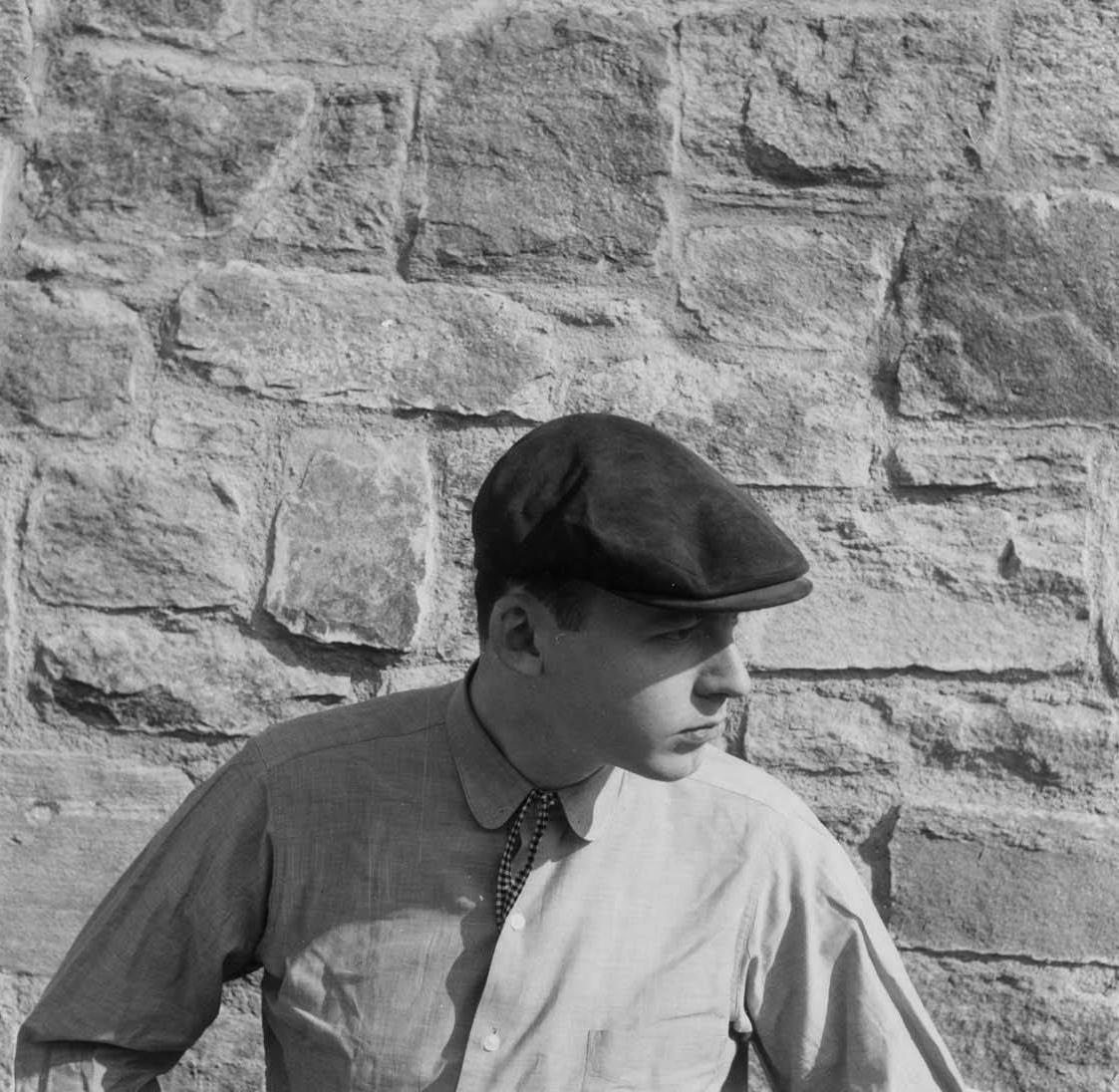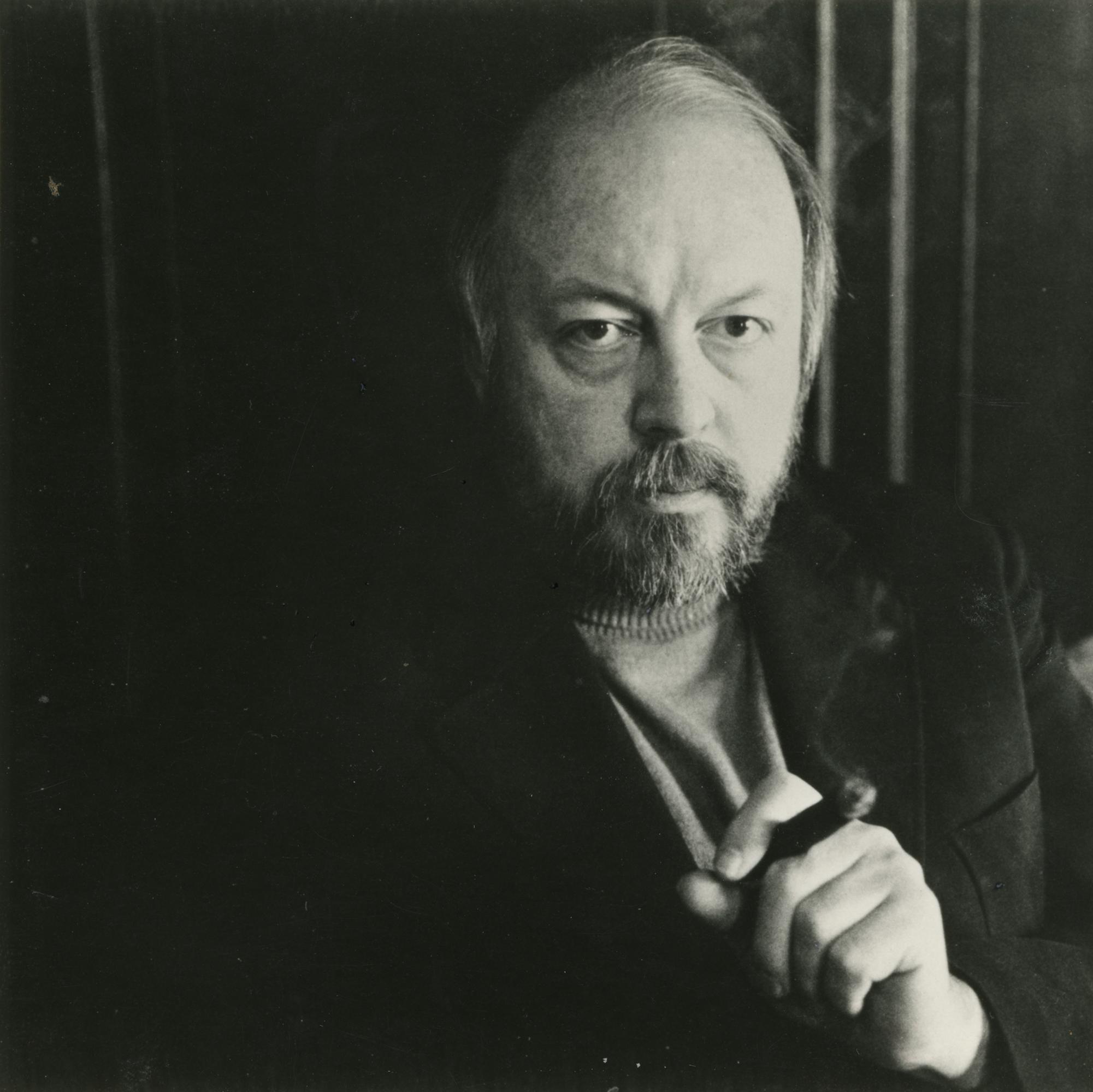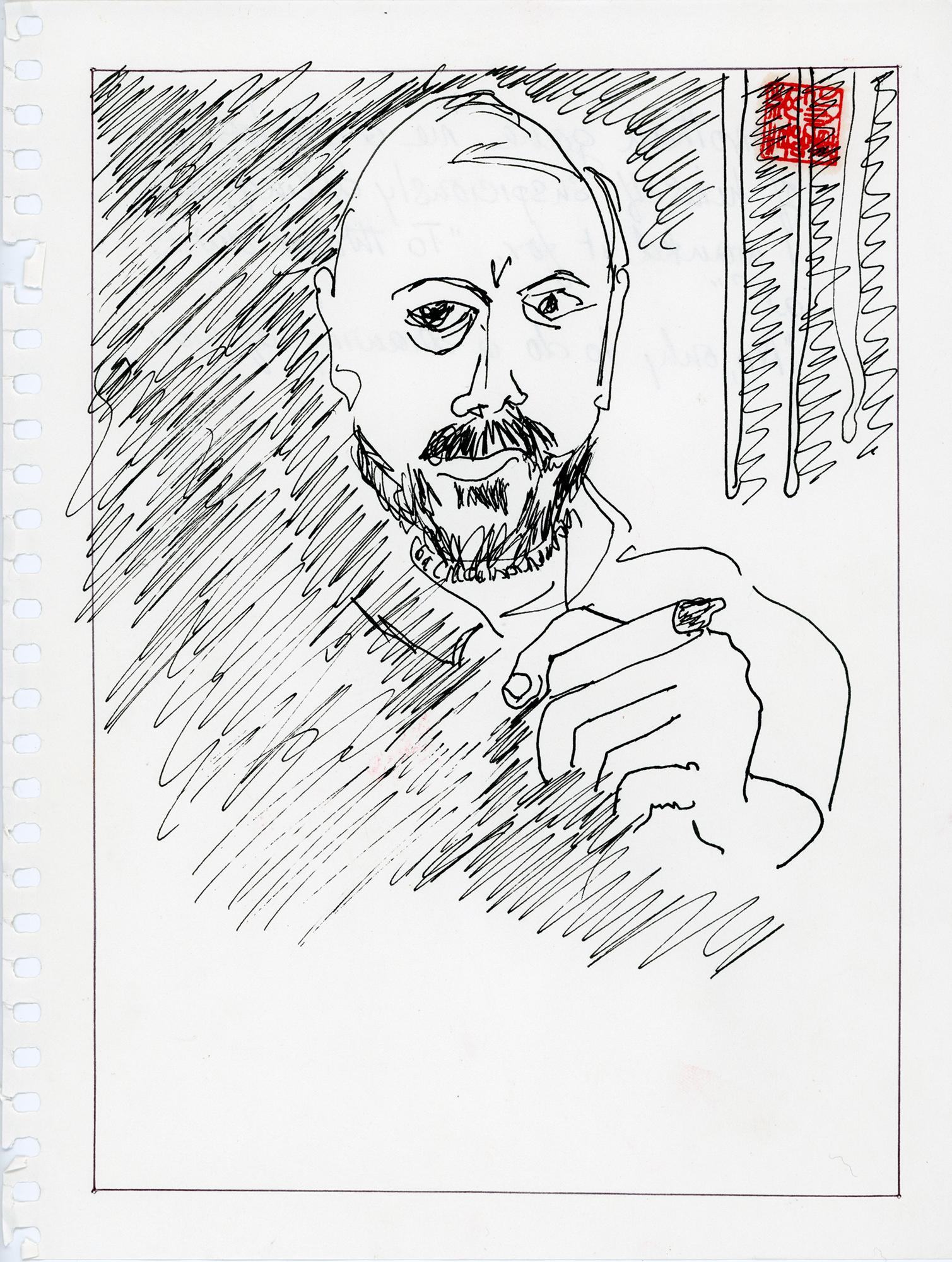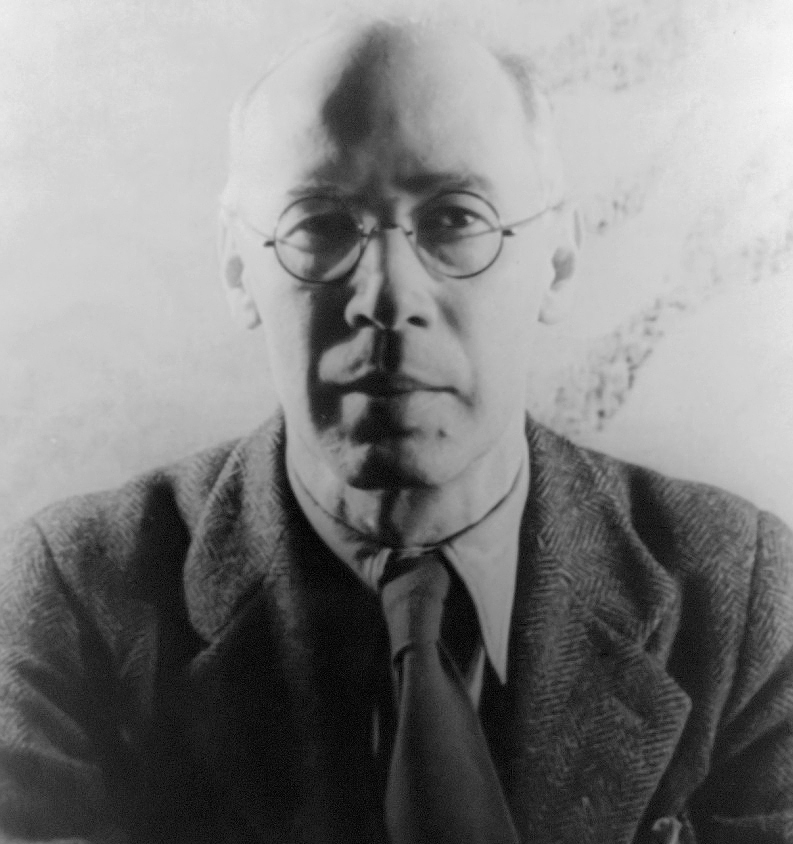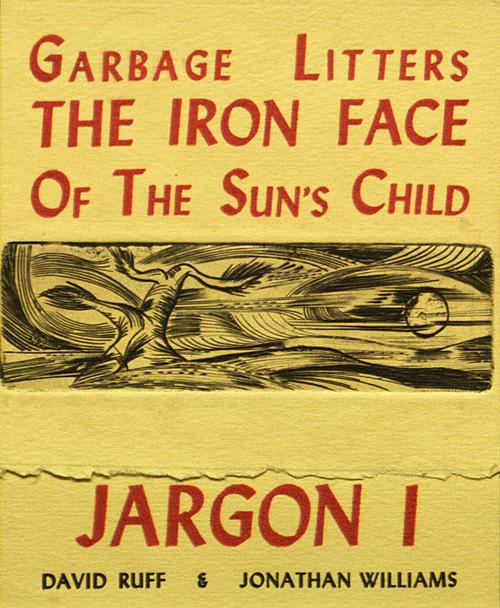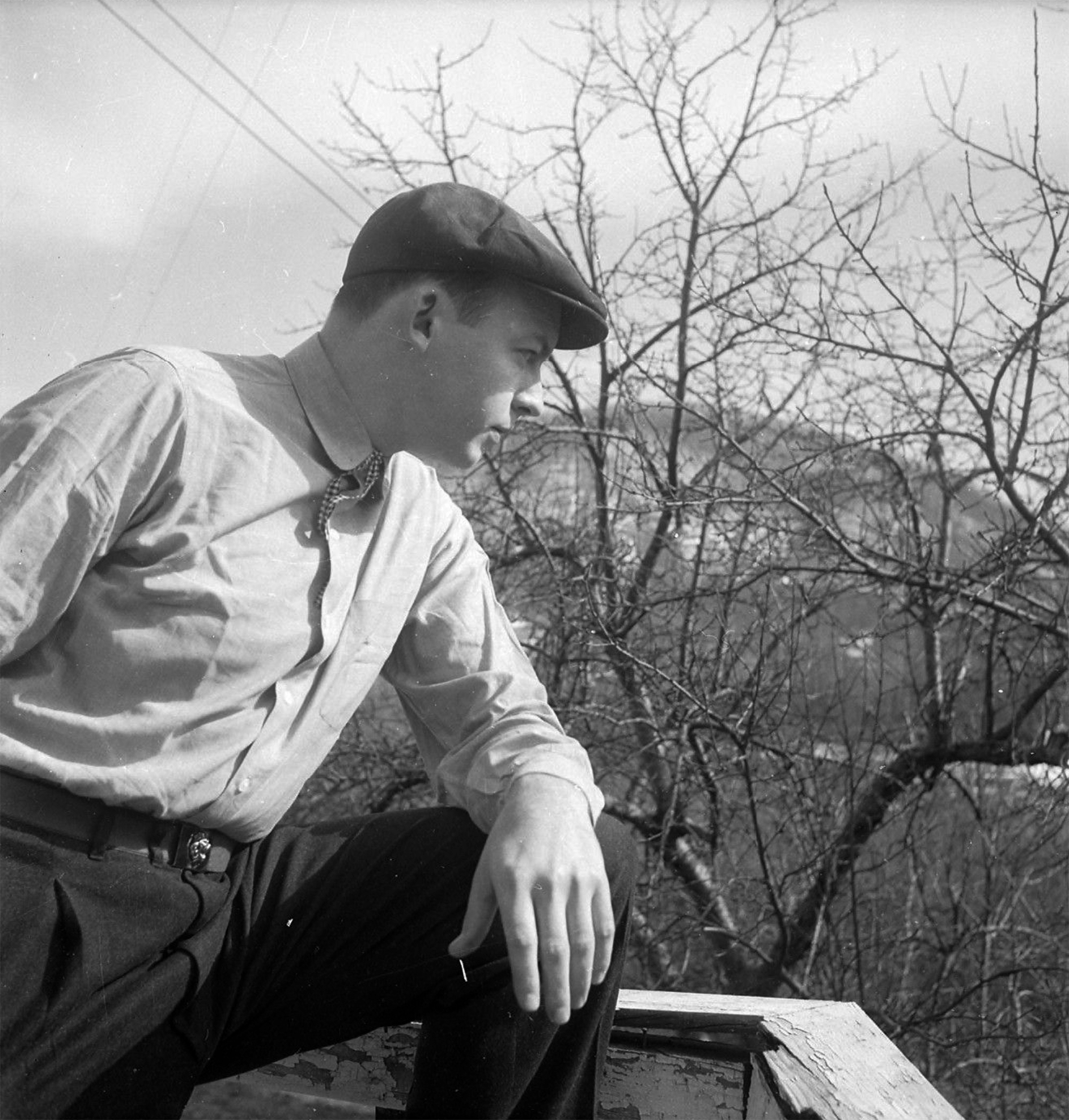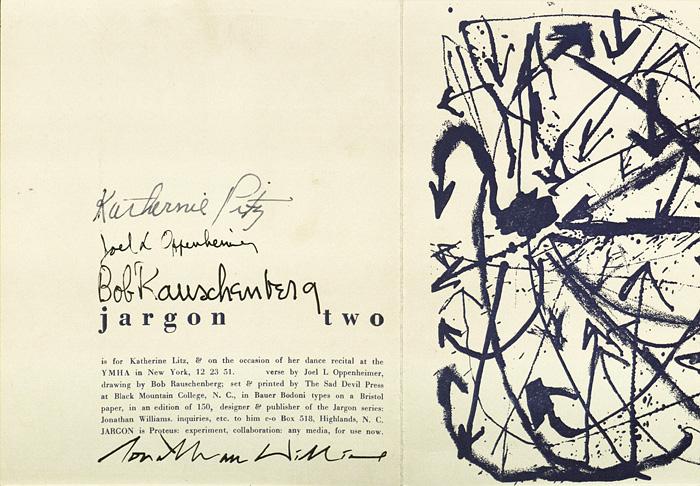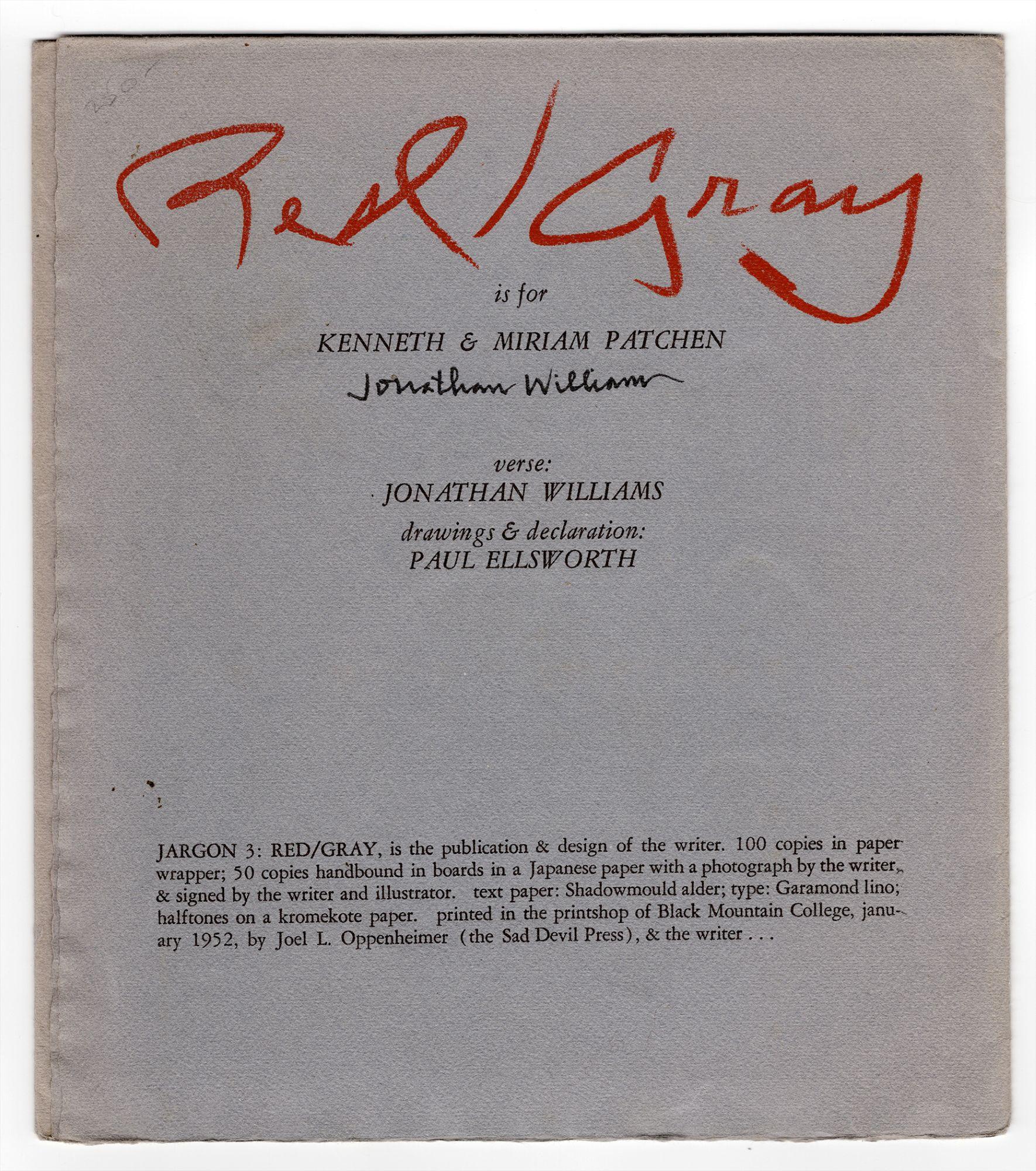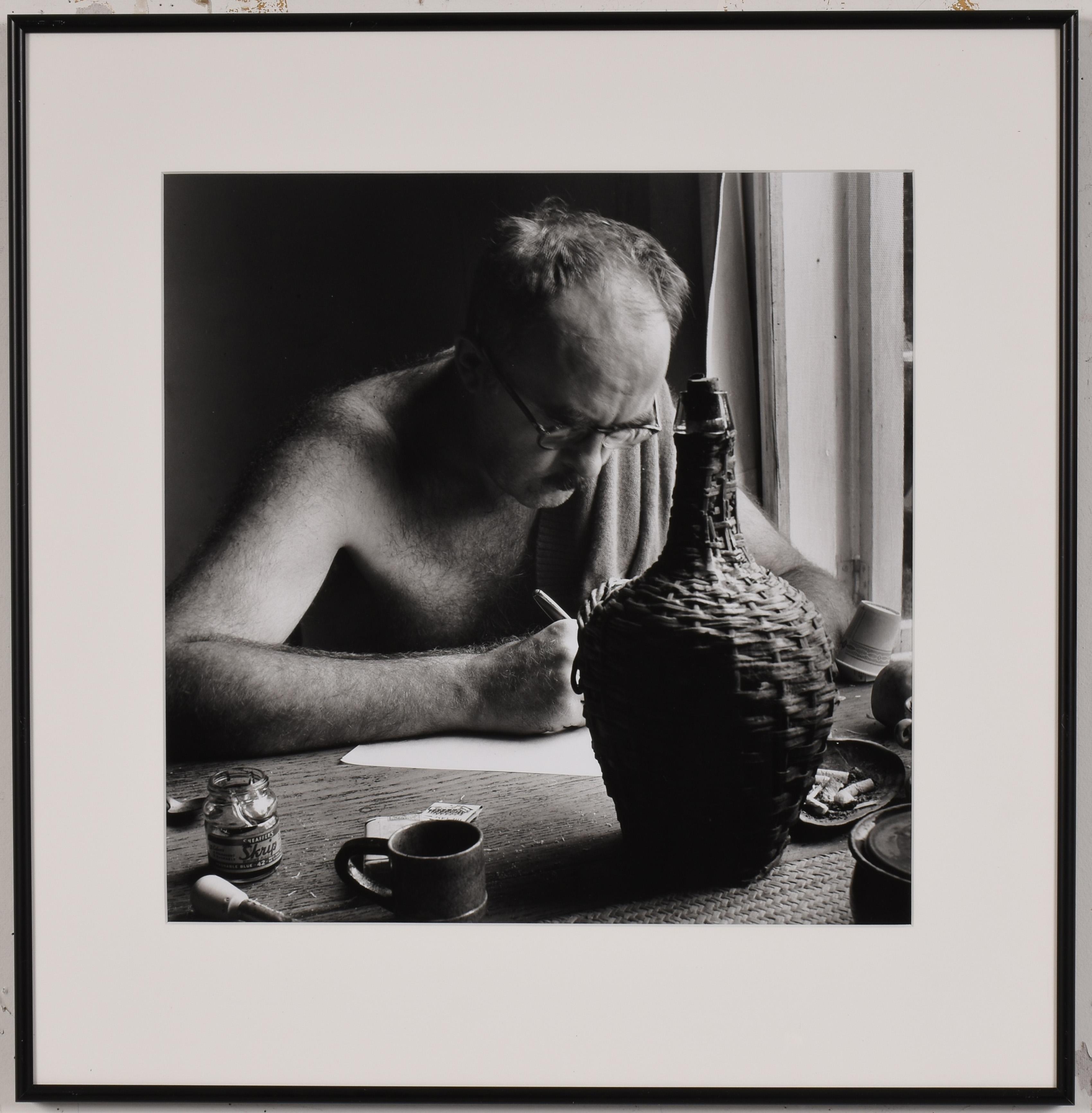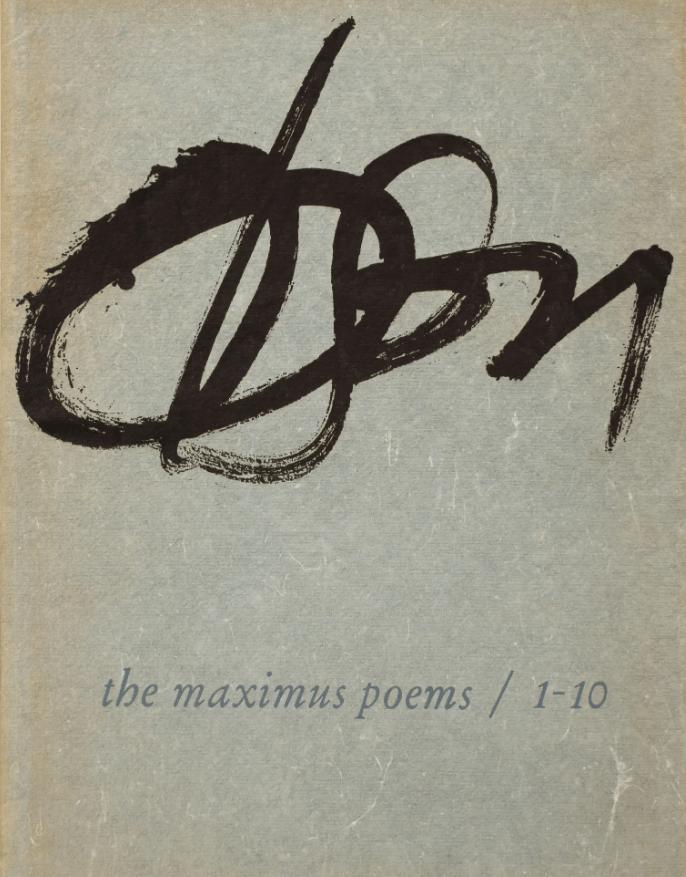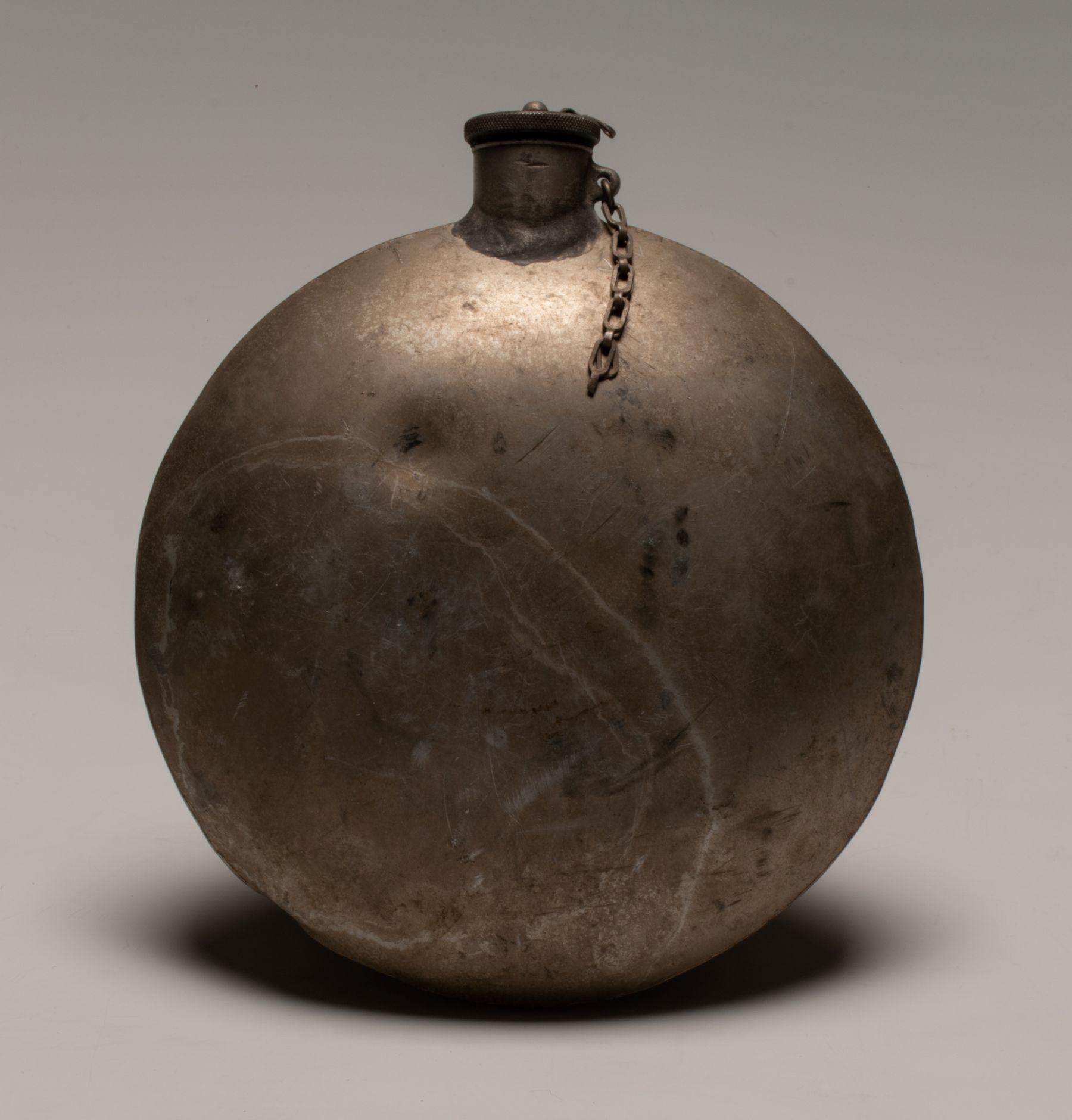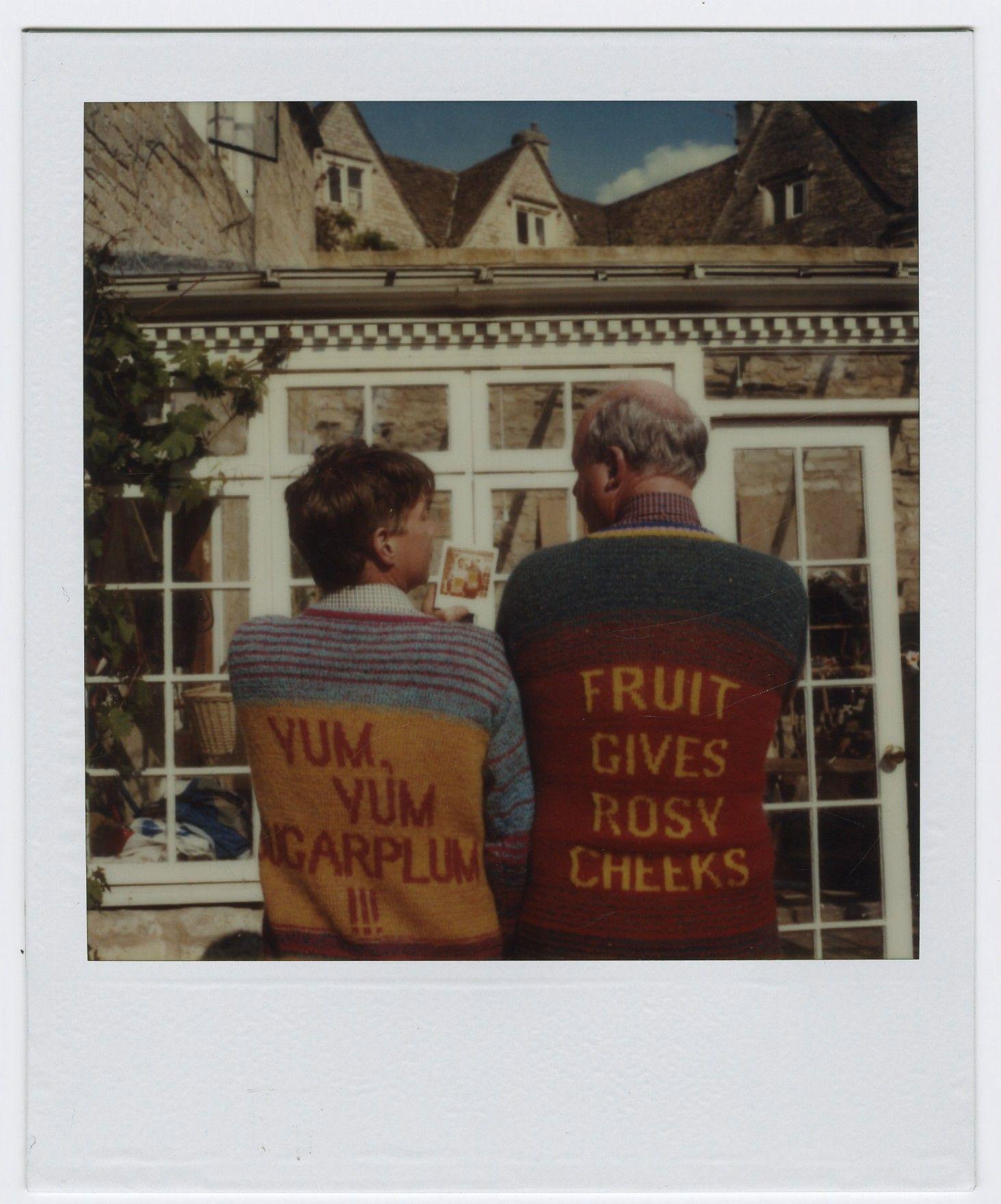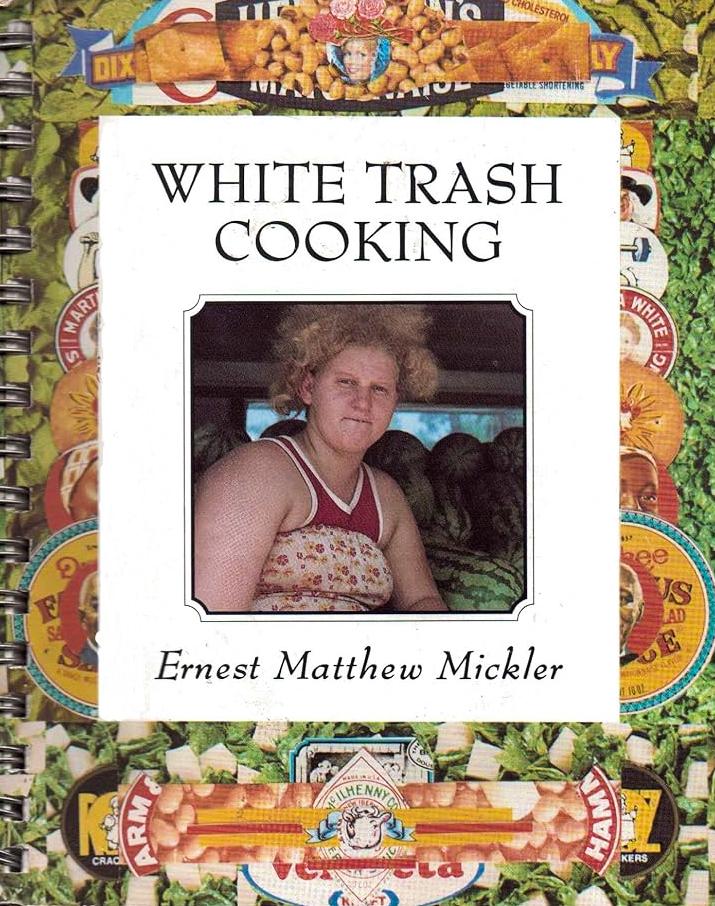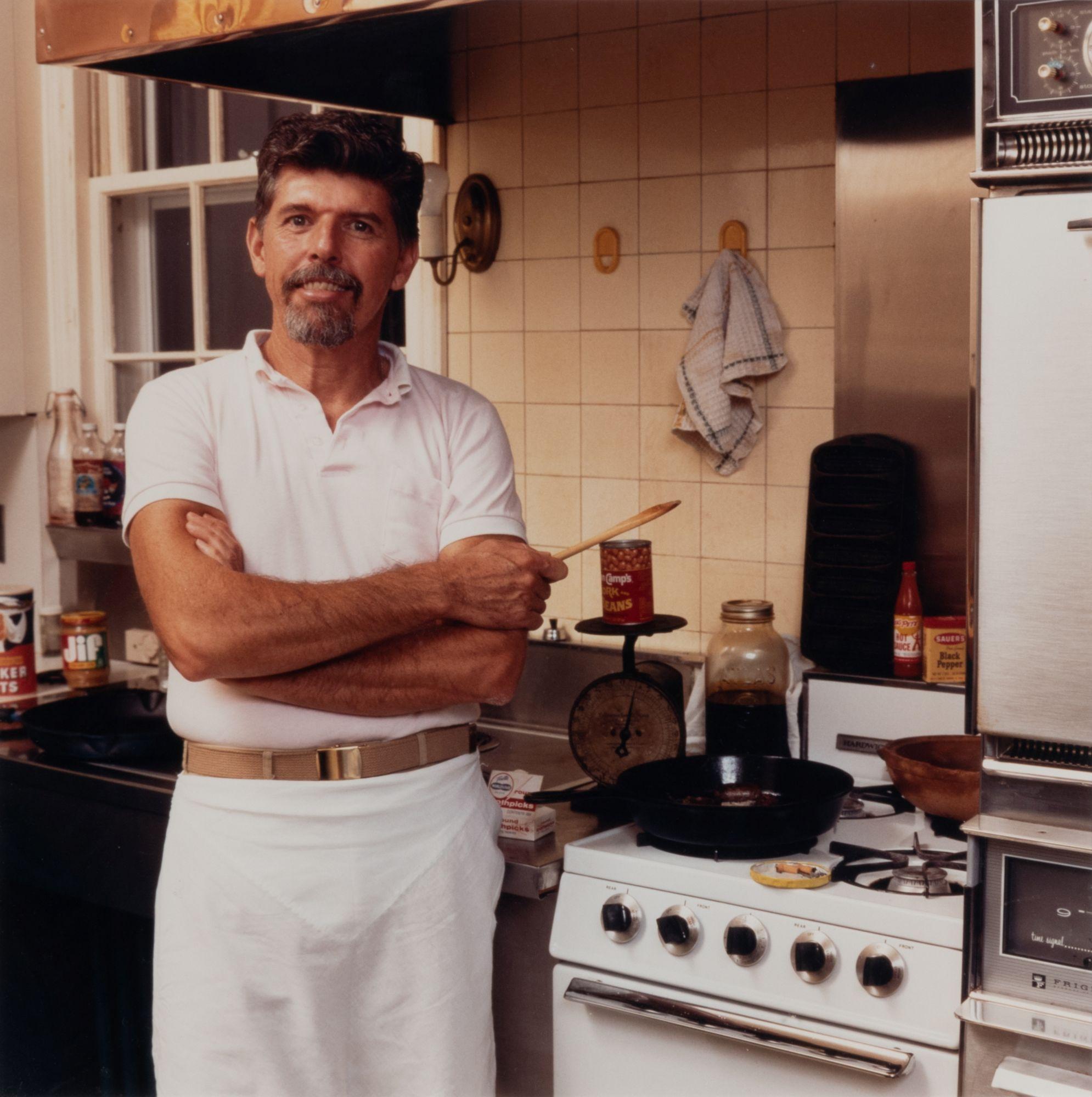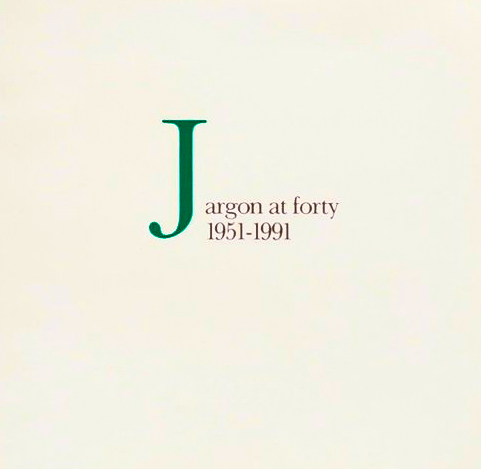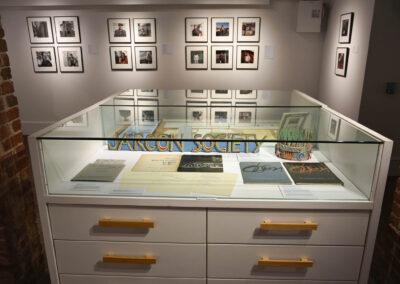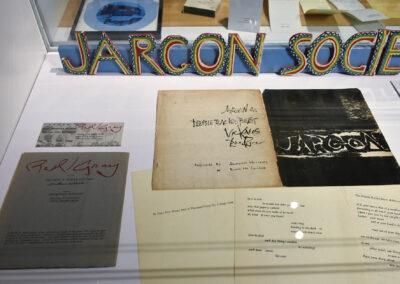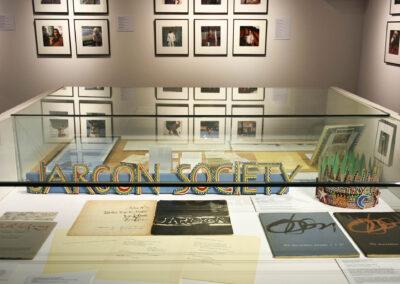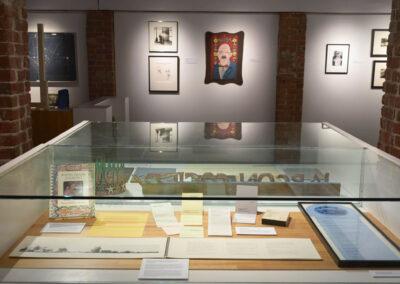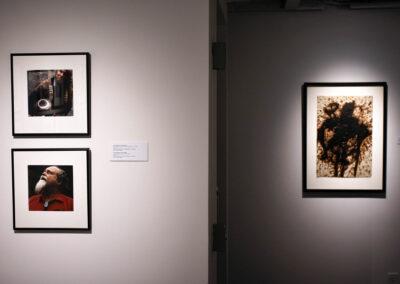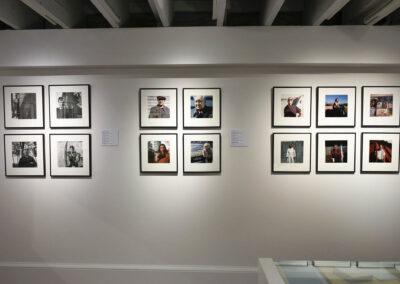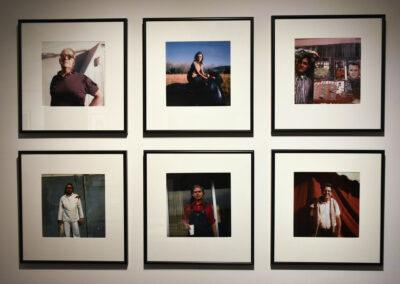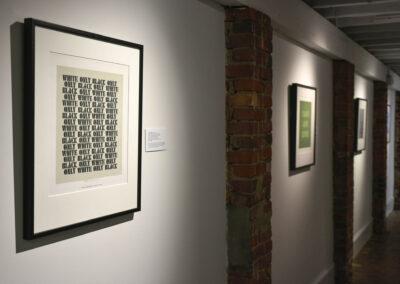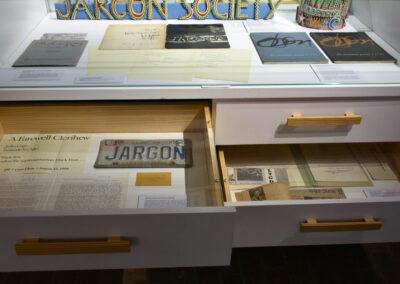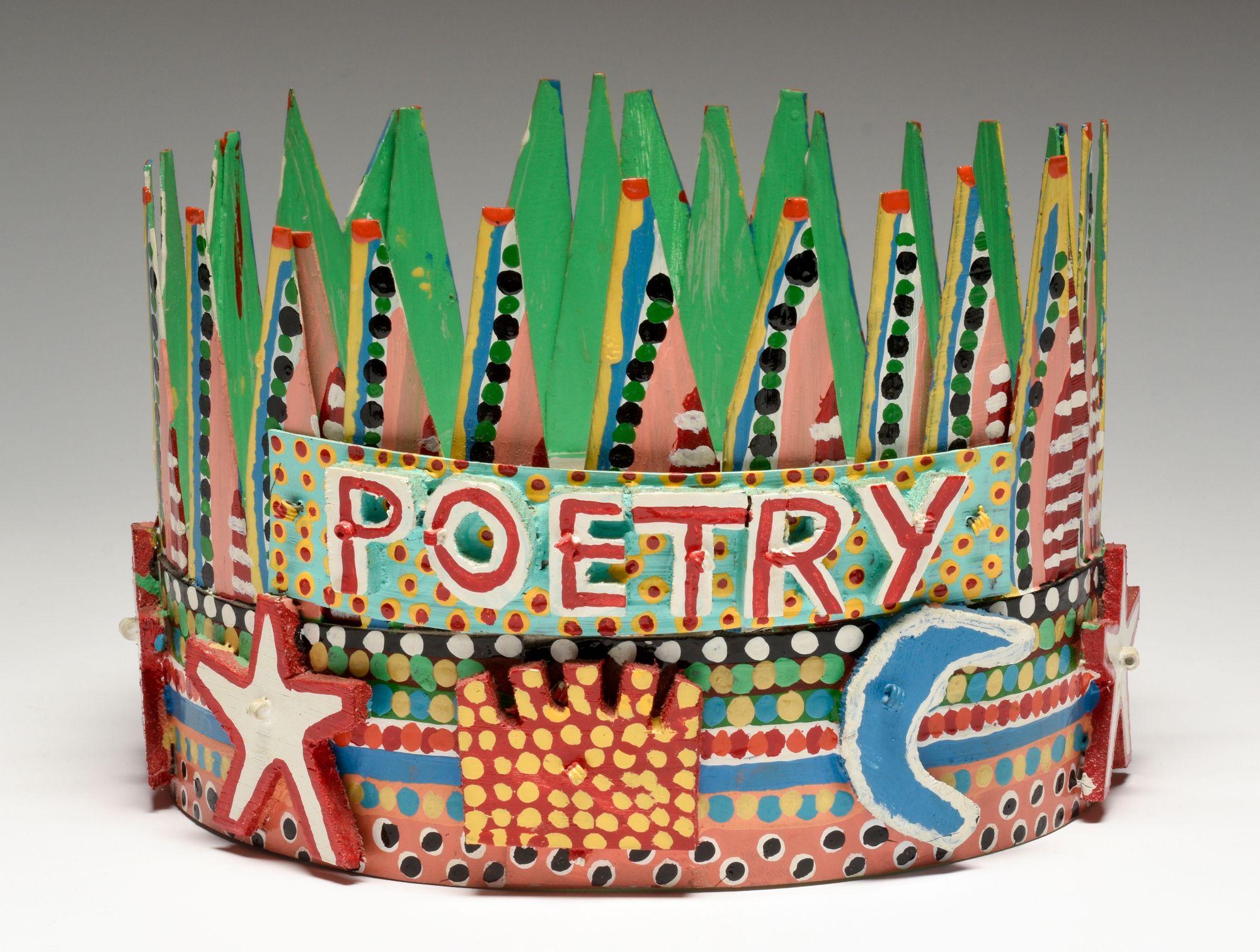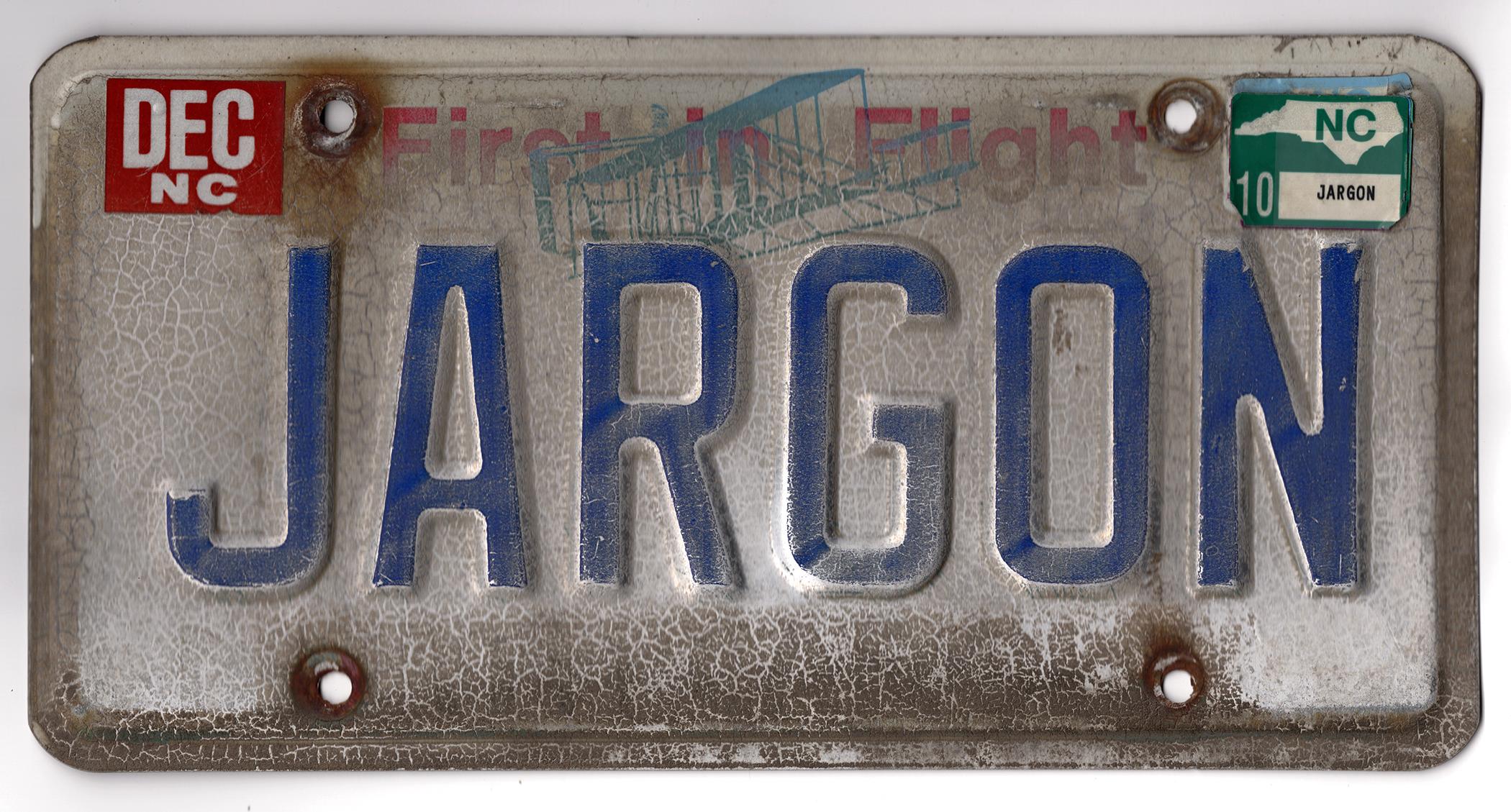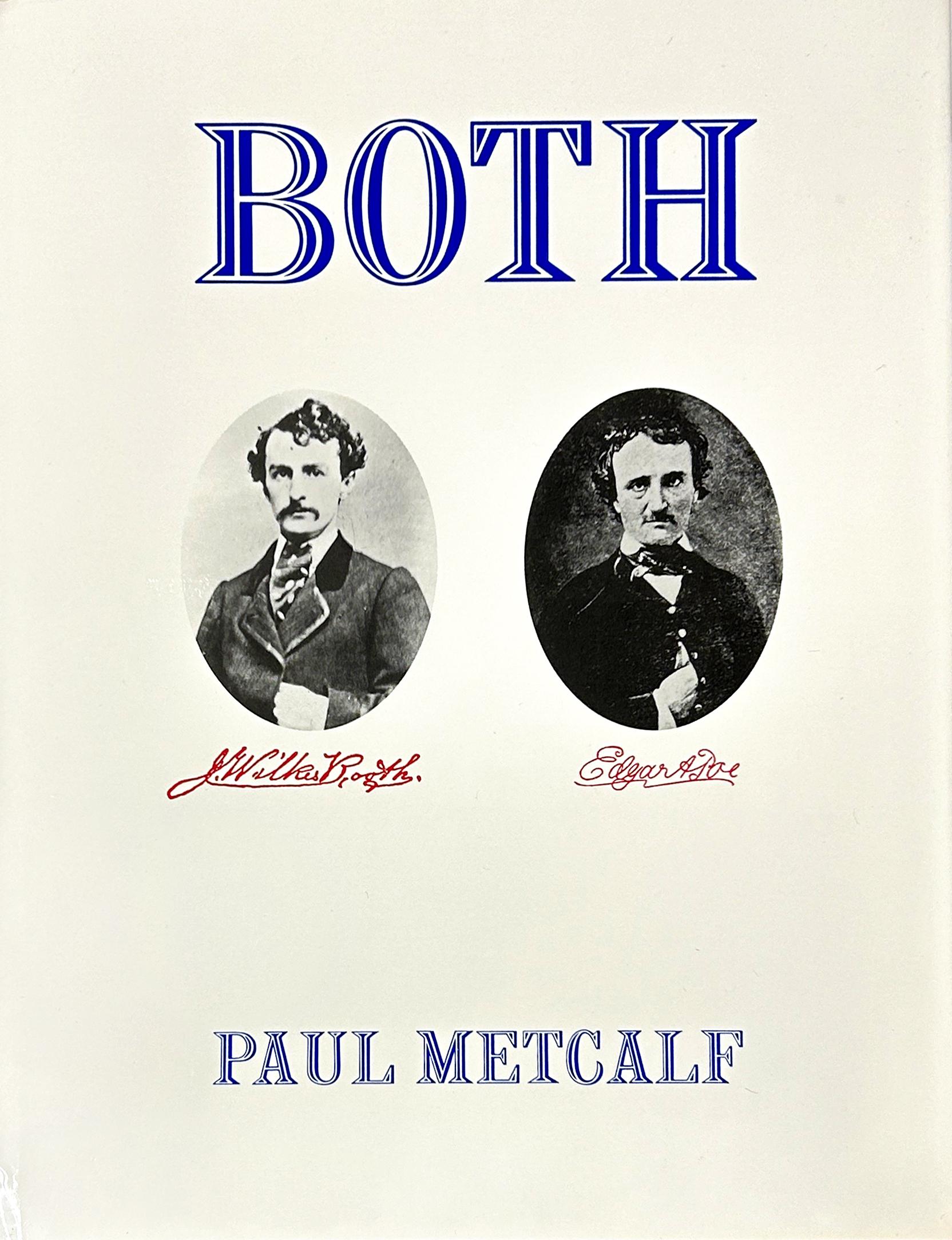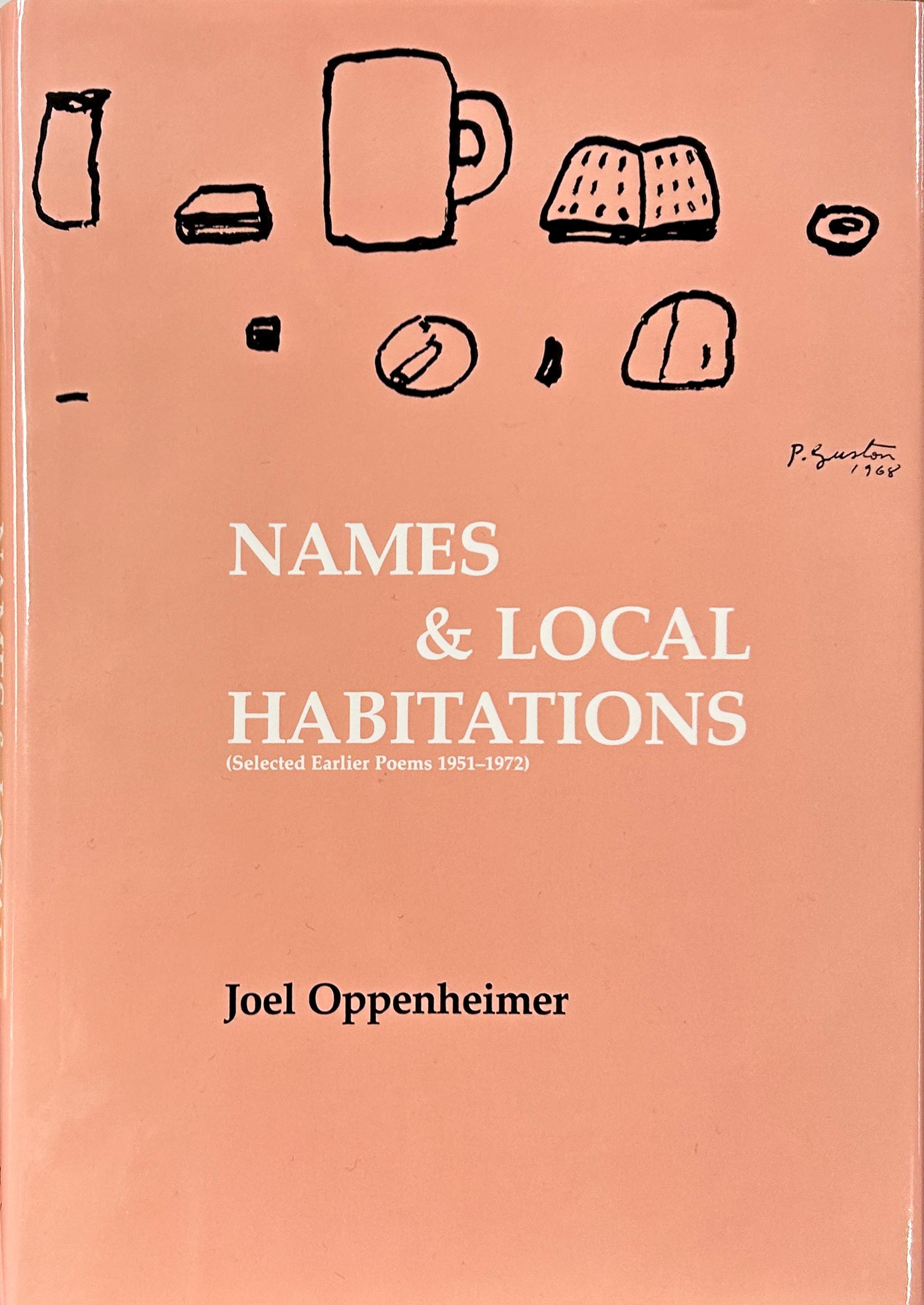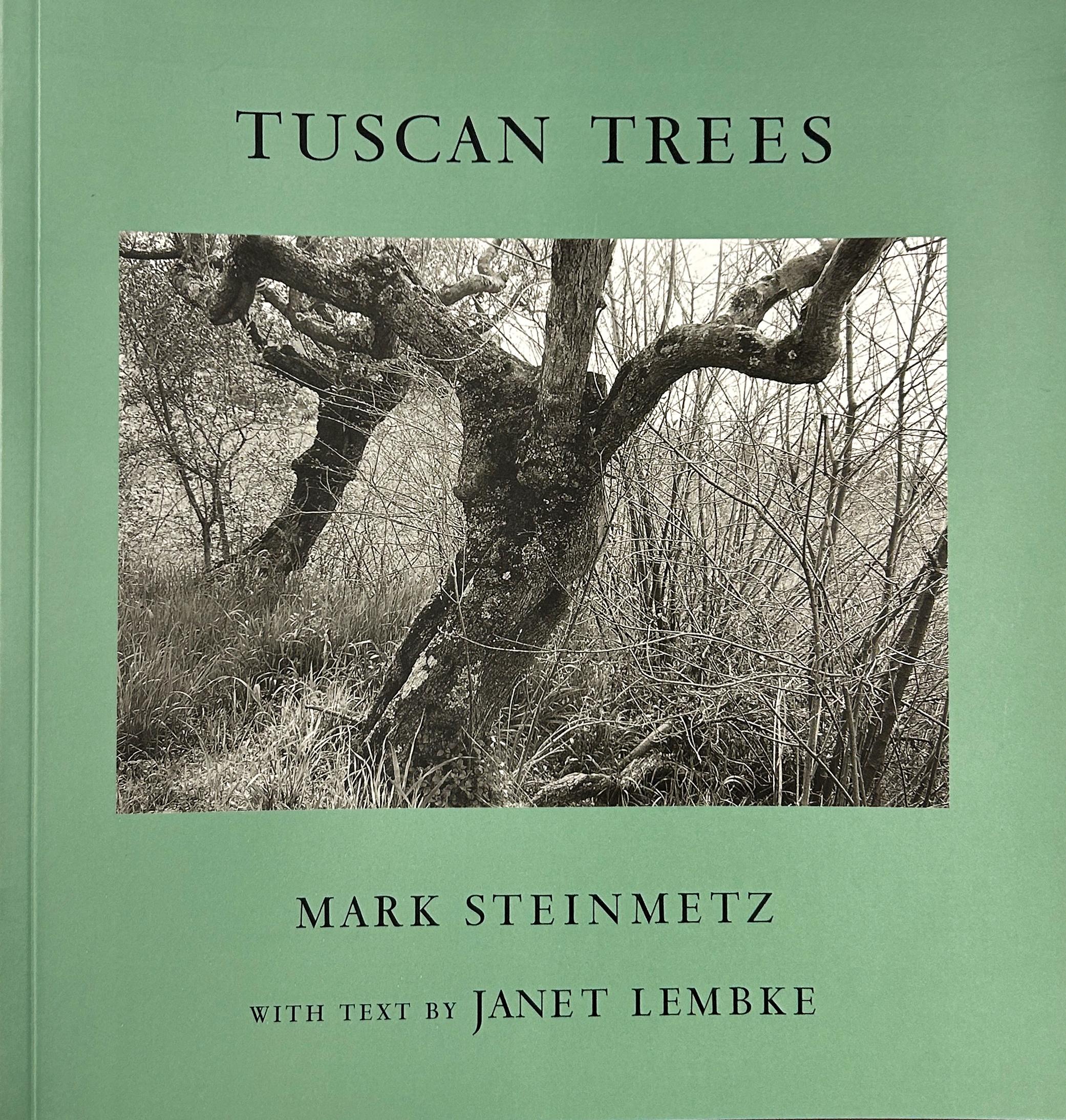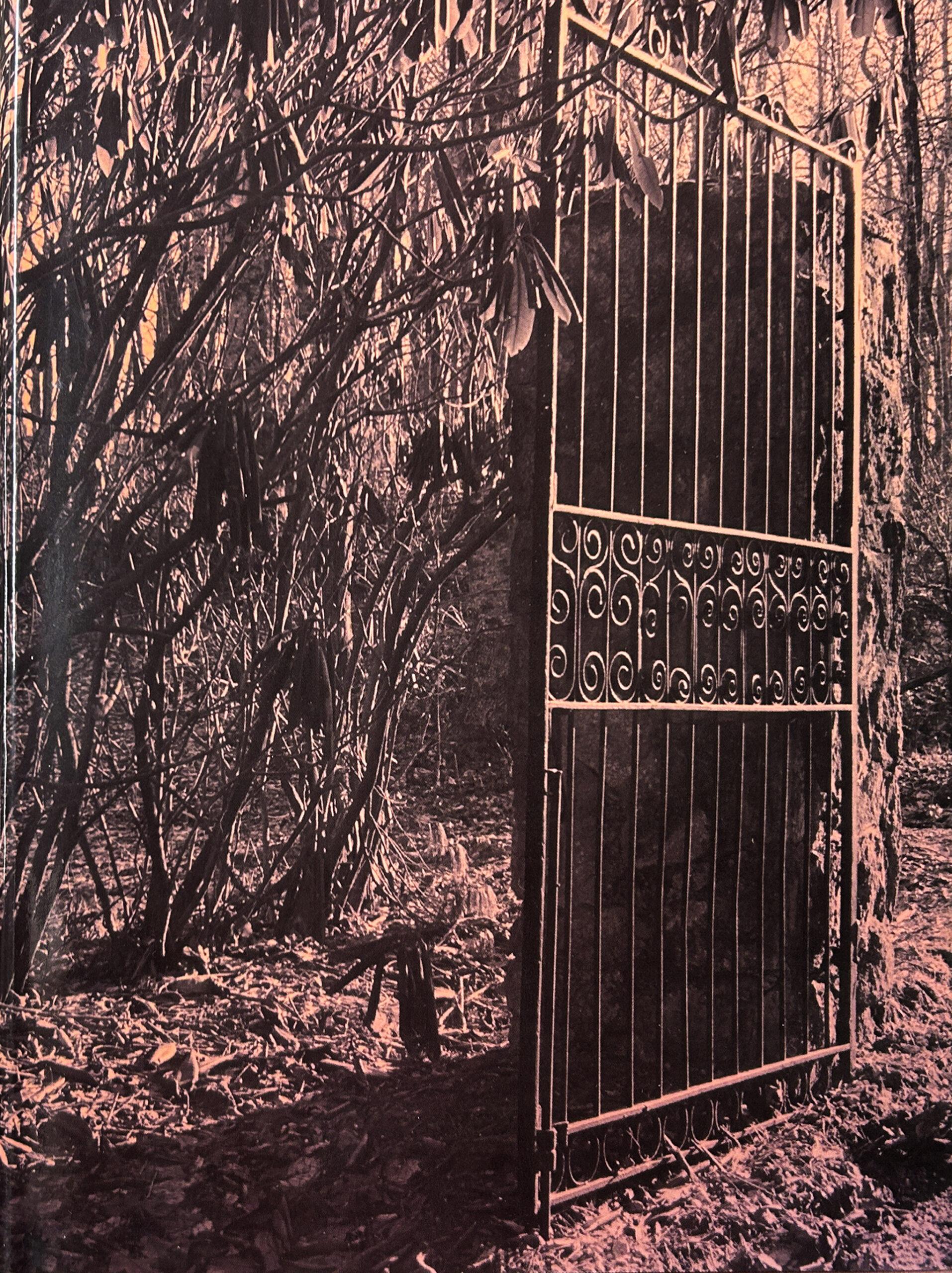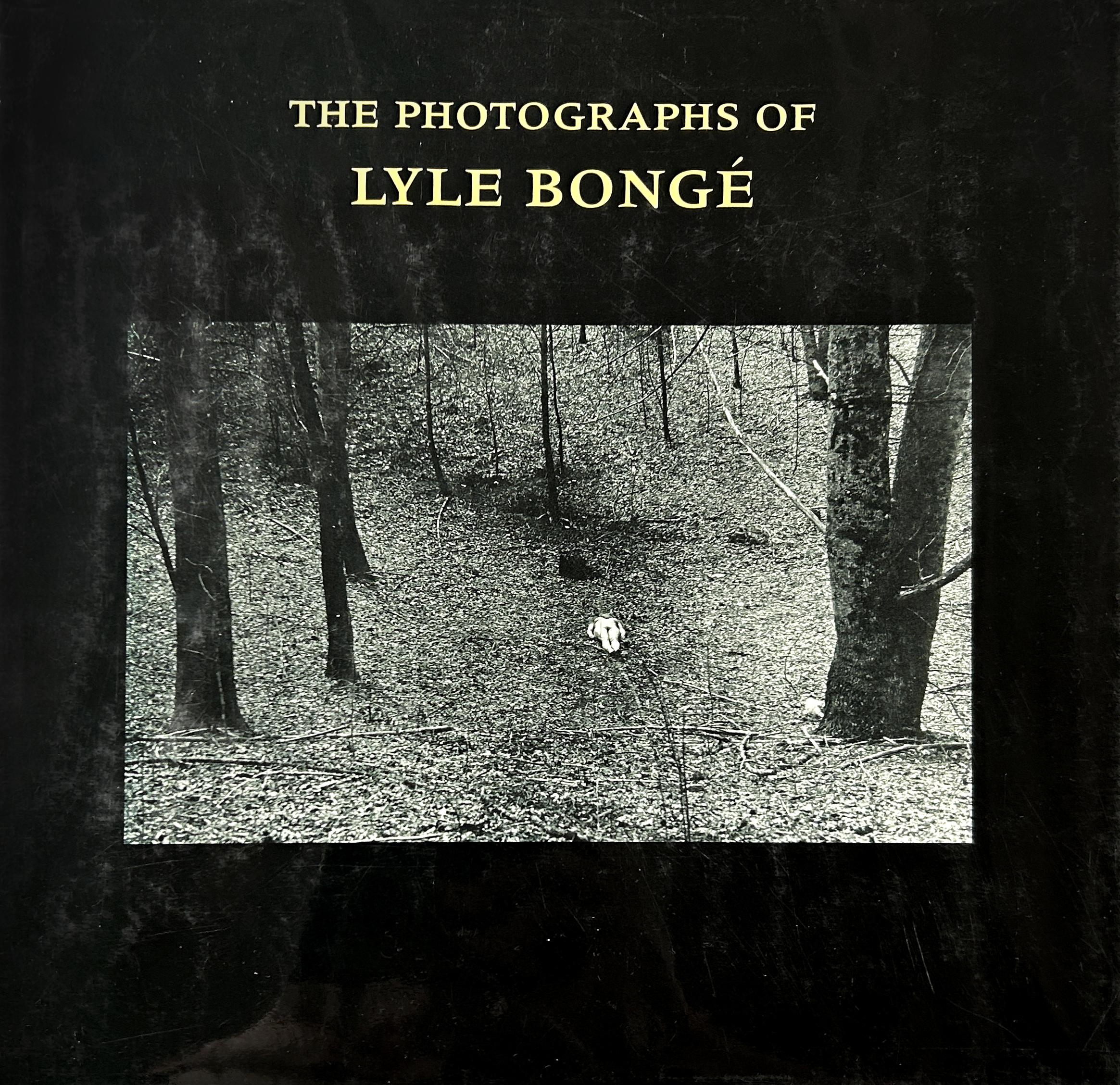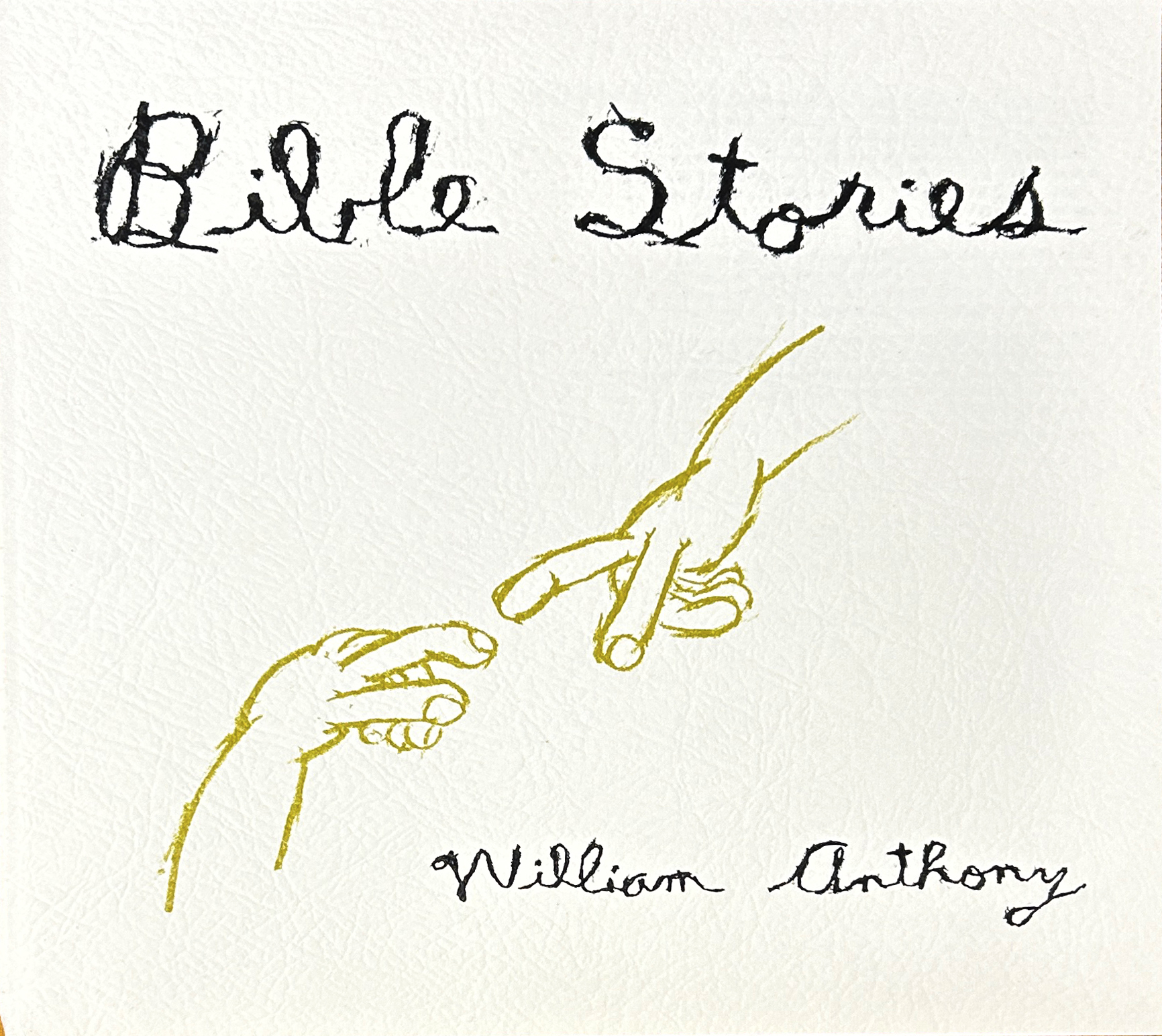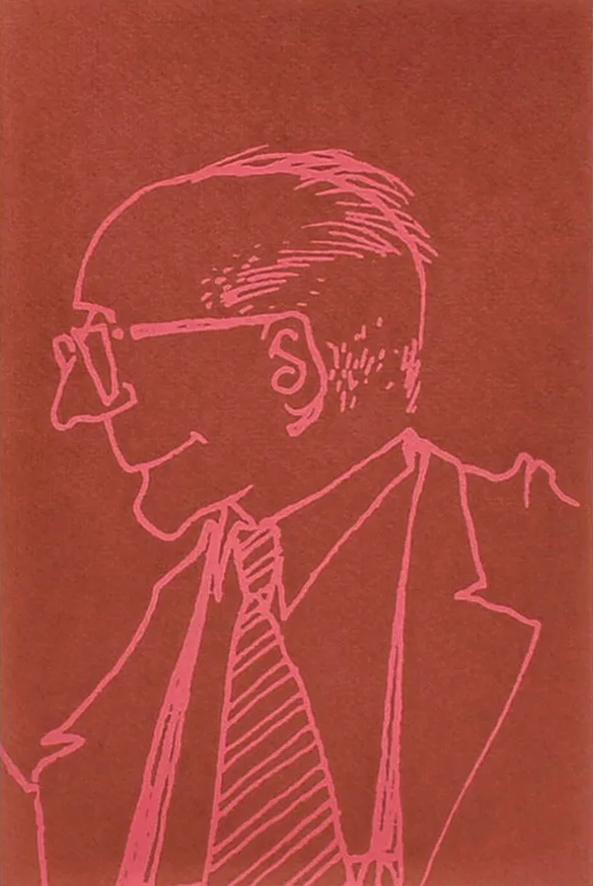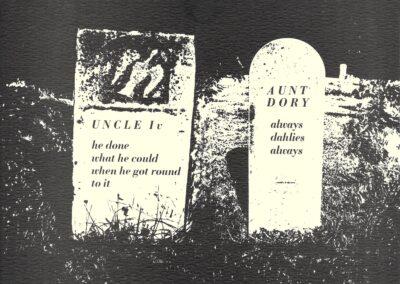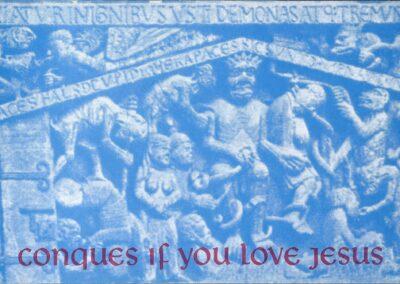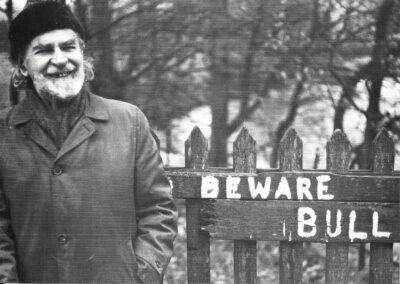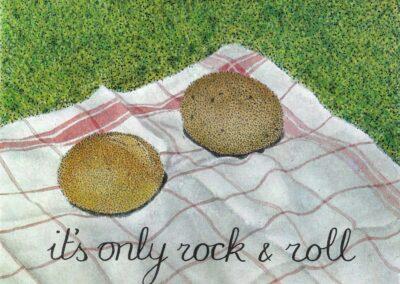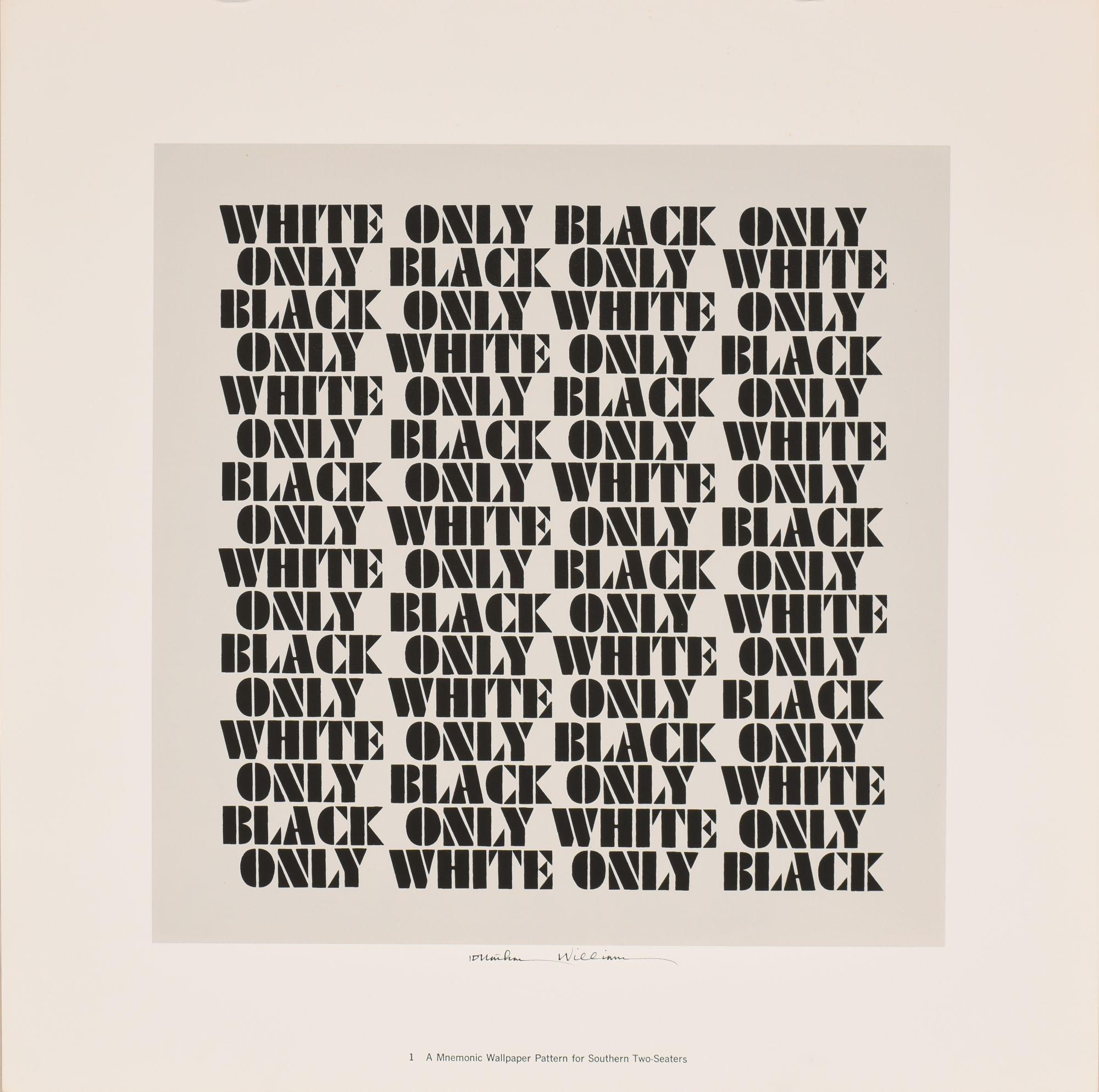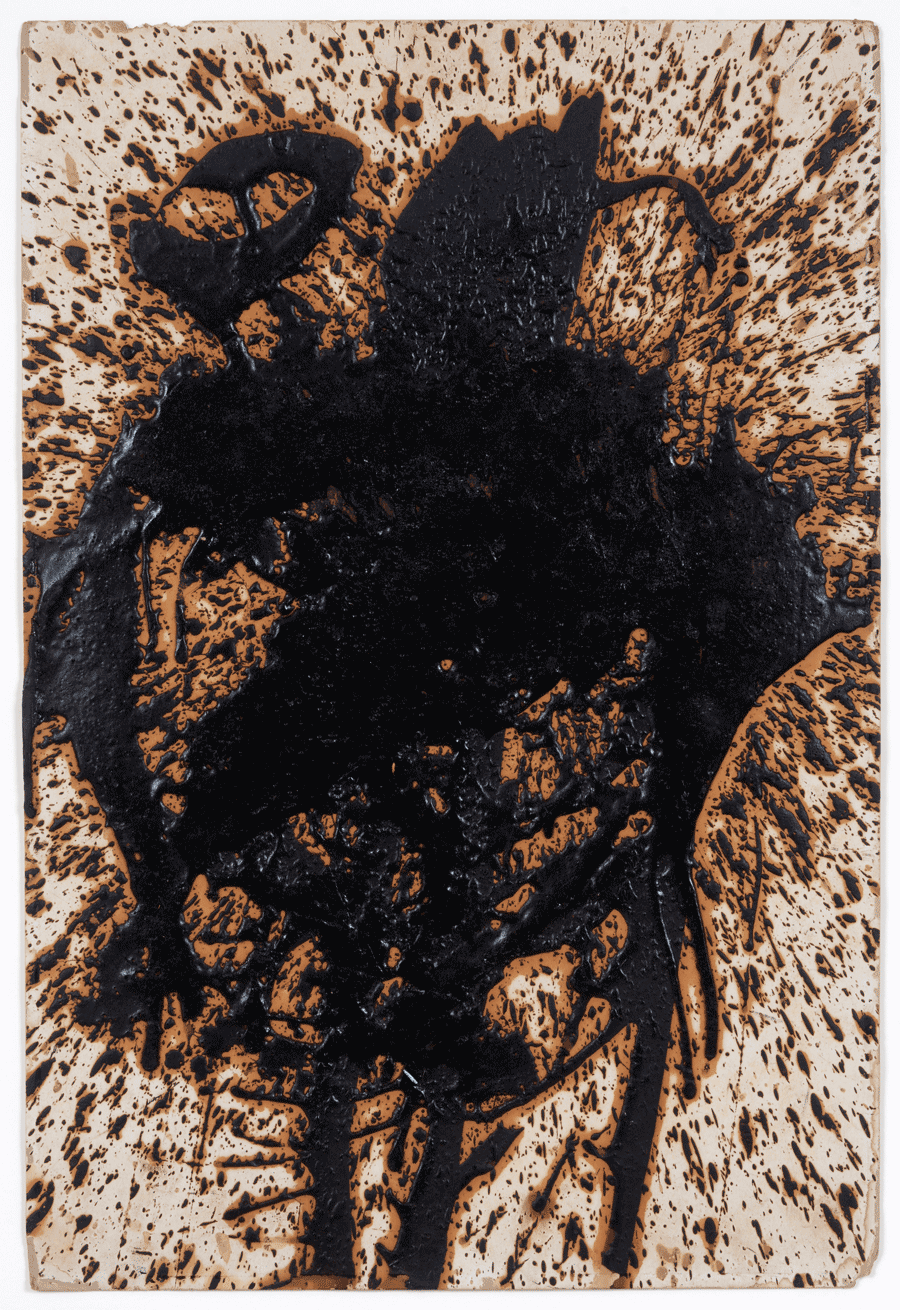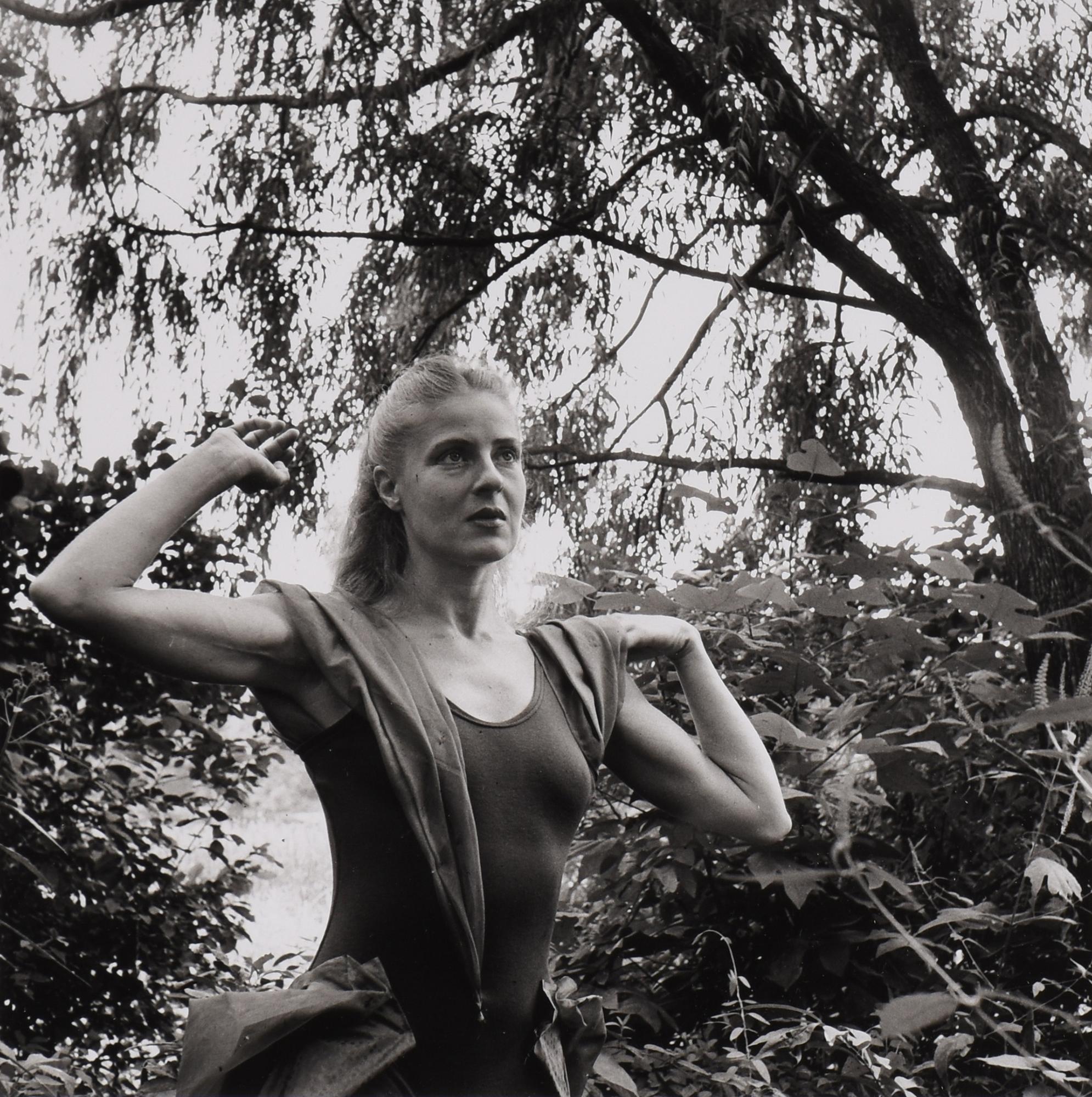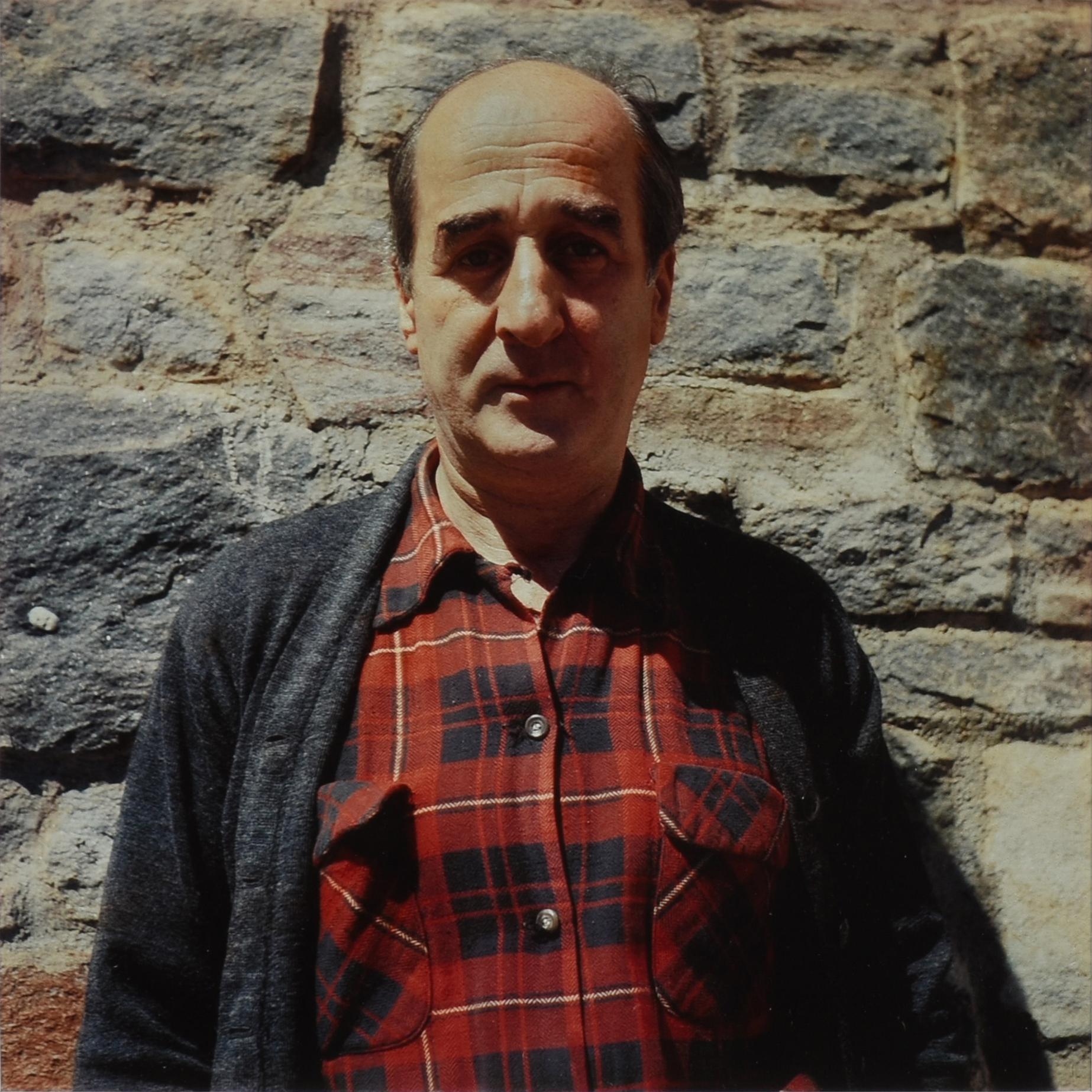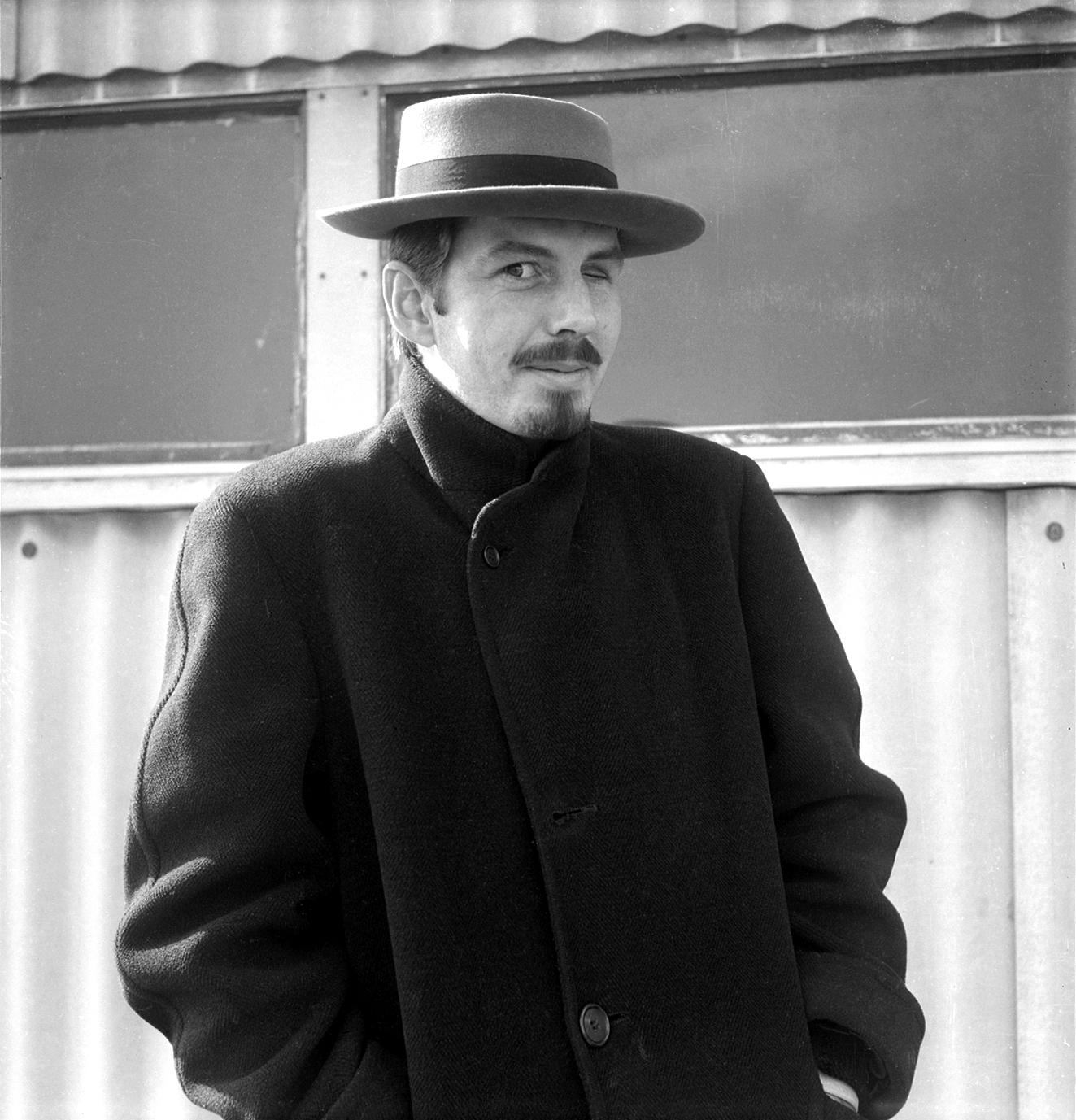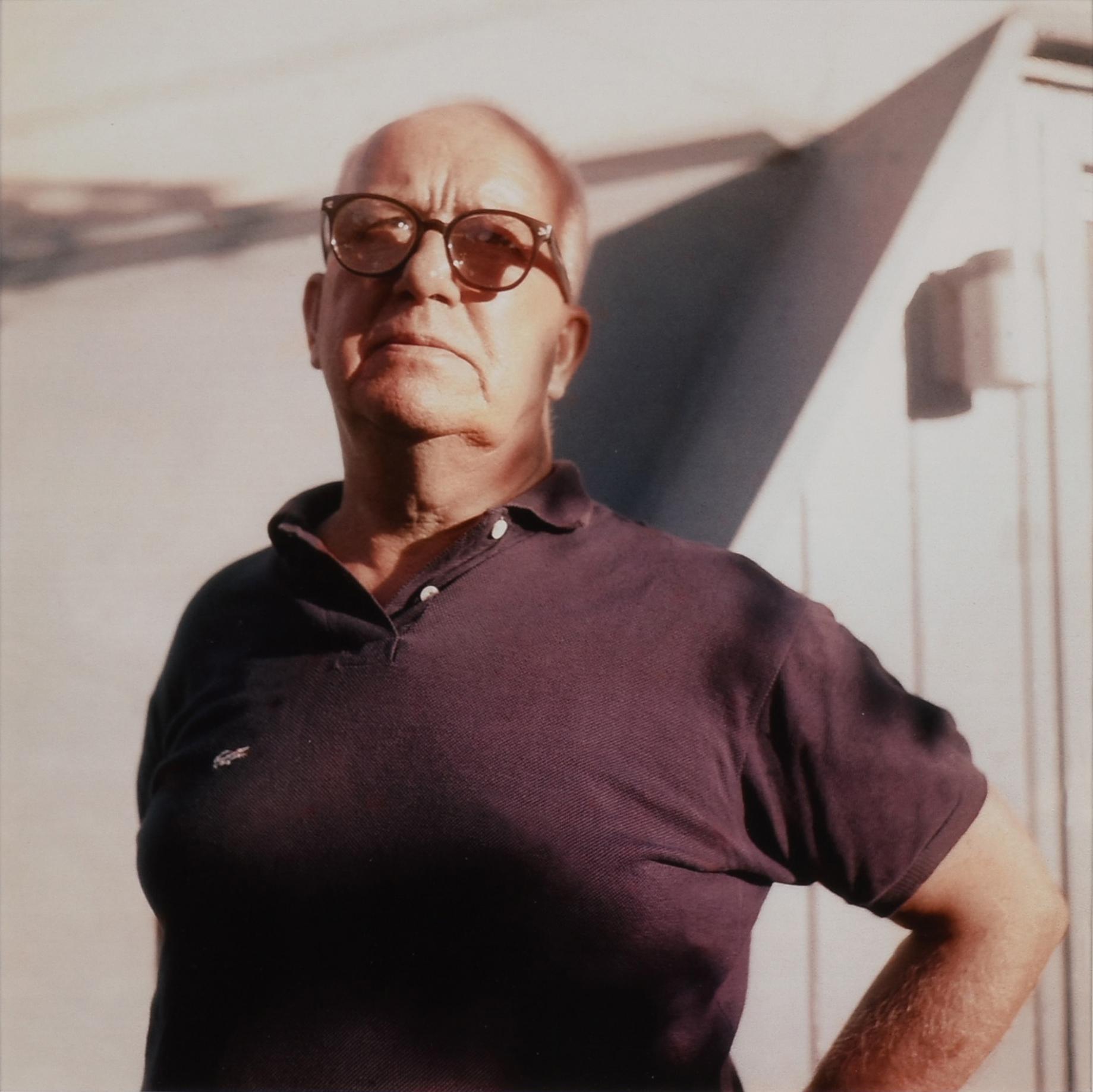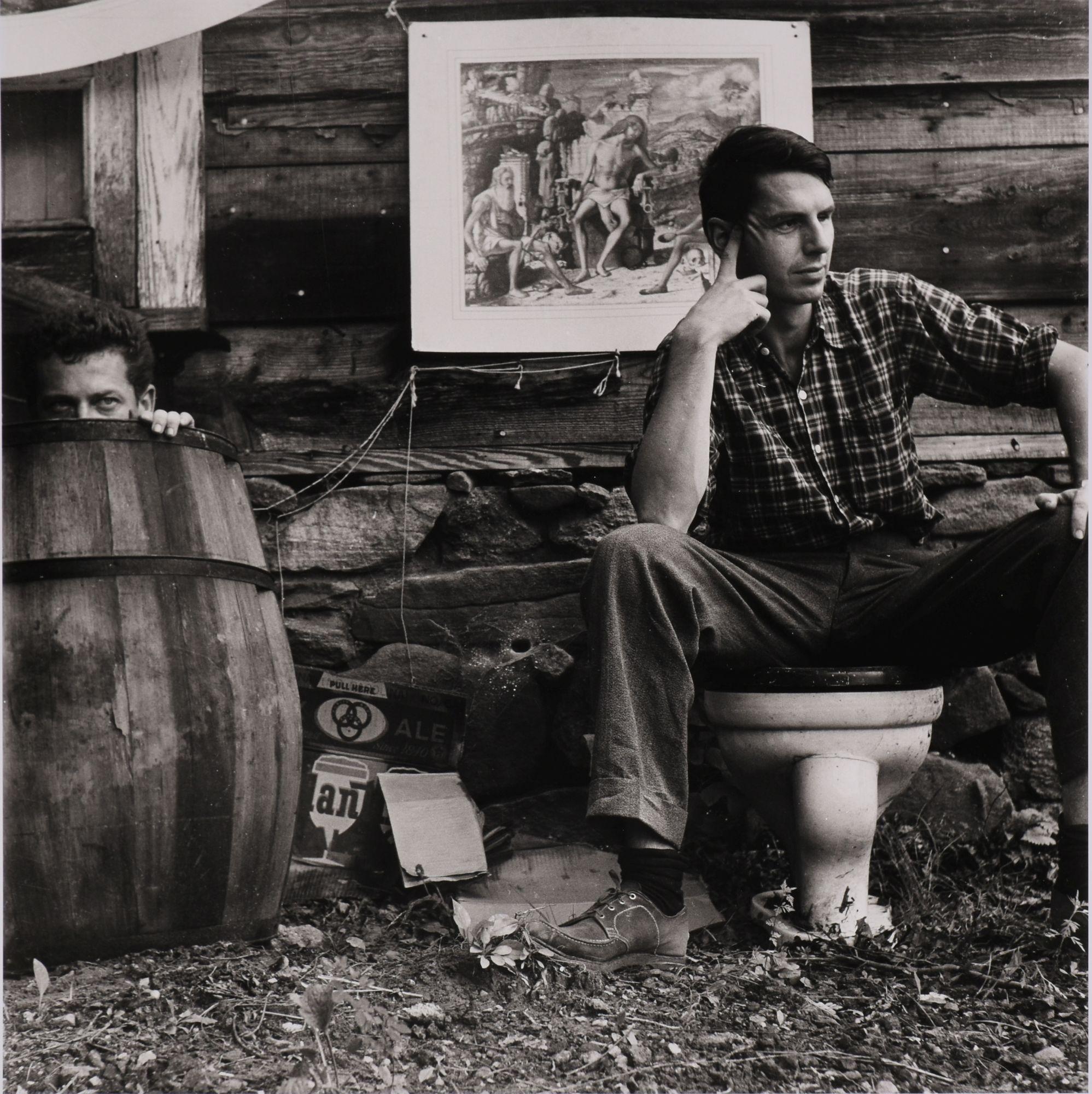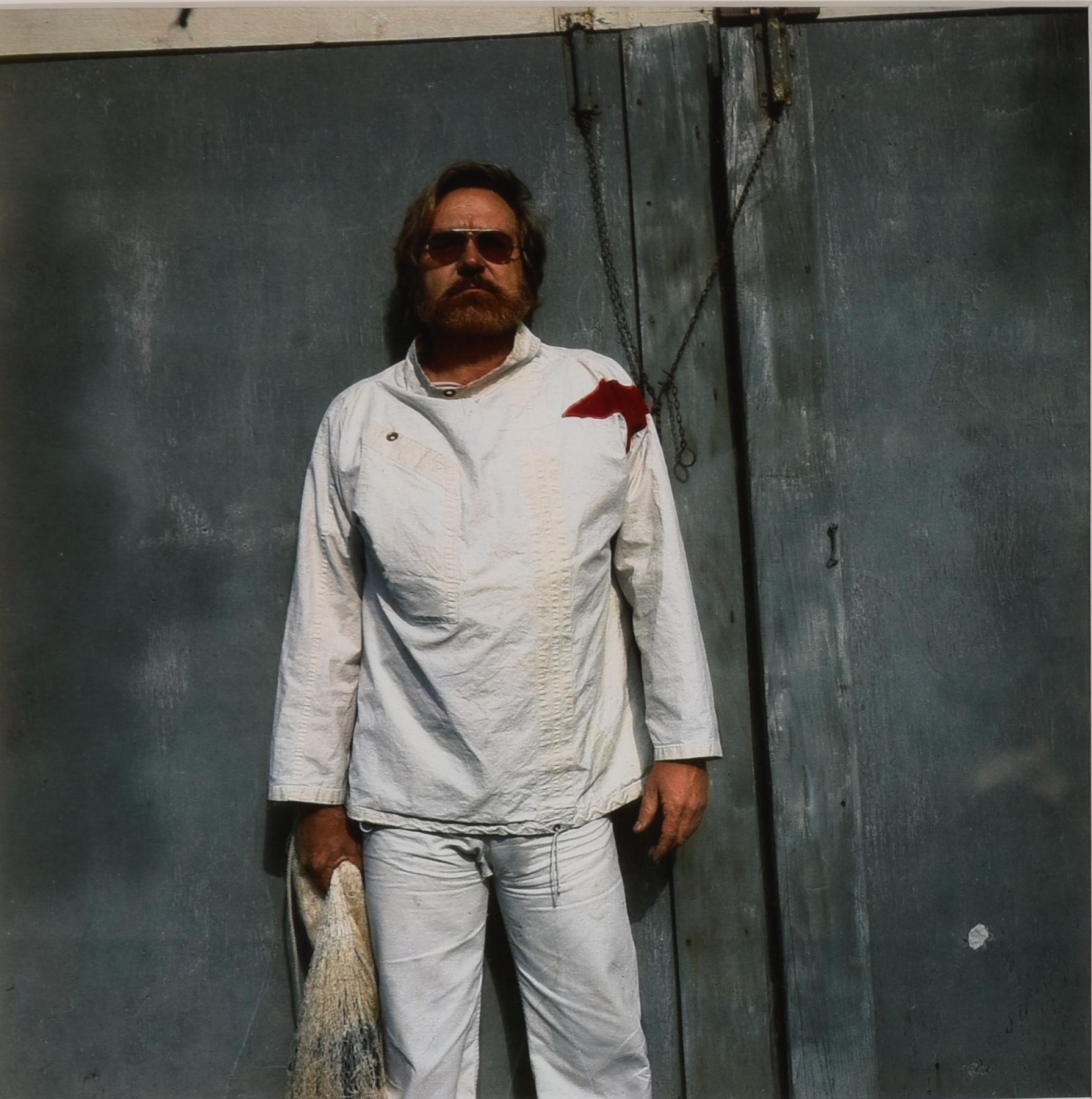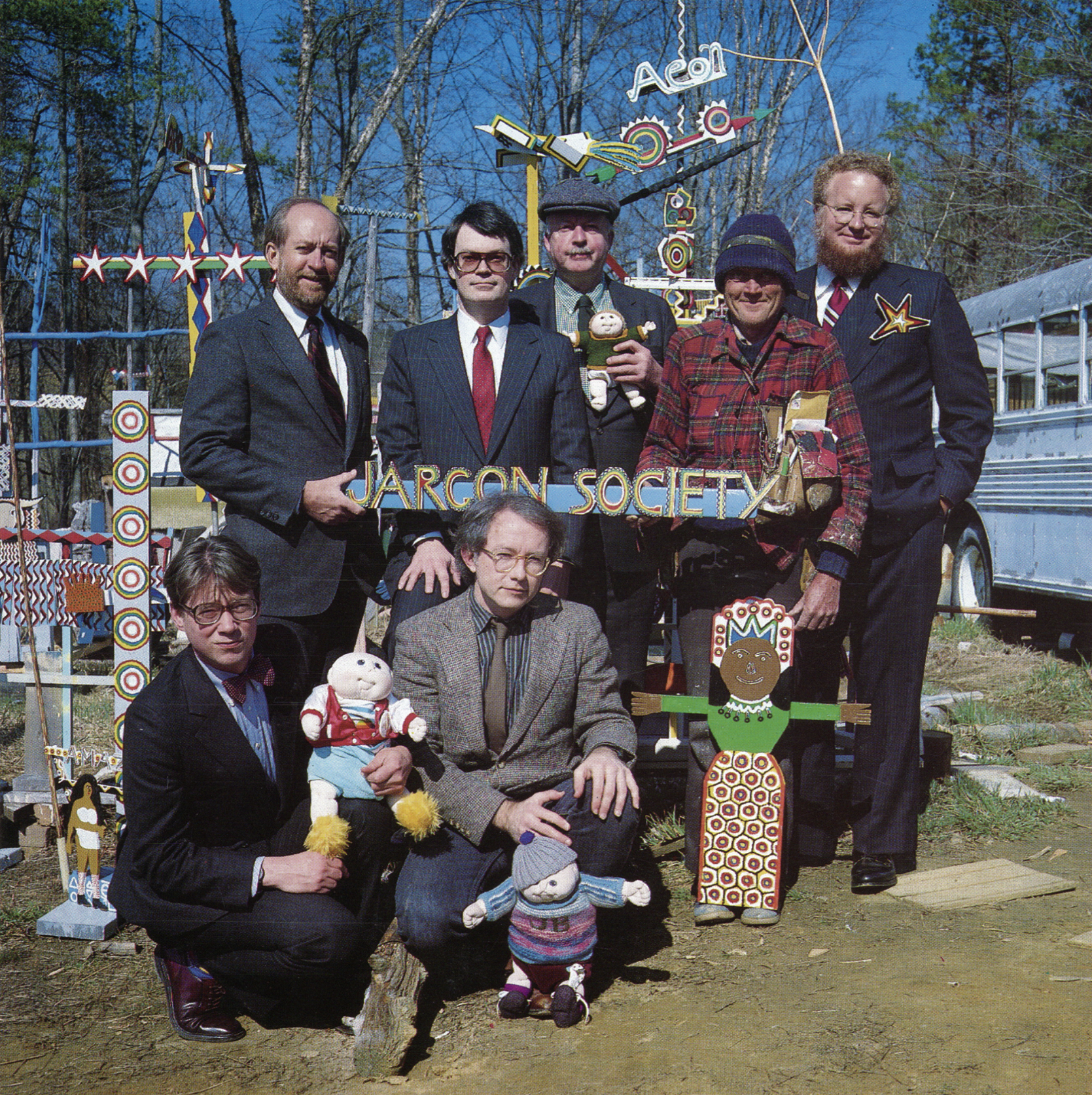
Jonathan Williams &
The Jargon Society
A Digital Exhibition

Jonathan Williams &
The Jargon Society
A Digital Exhibition
Jonathan Williams at Black Mountain College.
Jonathan Williams (1929–2008) was a man whose robust and eclectic interests and endeavors make him impossible to easily define. He was a photographer; a poet and essayist; a publisher and designer of books; a collector of books, art, and language; a walker and hiker; an active letter writer; a Southerner by birth and traveler by nature; an advocate for the under-appreciated; and a man who appreciated good food and drink. Jonathan’s interest in photography and the opportunity to take a class with Harry Callahan led him to Black Mountain College in the summer of 1951. He made extraordinary photographs at BMC, and his interests in poetry, writing, and publishing were deeply ignited by the teaching and persona of Charles Olson. Today, Jonathan’s small press The Jargon Society is recognized as a part of Black Mountain College’s living legacy. This digital exhibition explores the quirky and complex world of Jonathan Williams the photographer, writer, publisher, and collaborator.
This Digital Exhibition was made possible through the generous support of the Lyle Bongé Fund, established in memory of Lyle Bongé. The exhibition is created by Adrian Shoemaker, 2025 Intern; Kira Houston, Outreach Manager; and Alice Sebrell, Director of Preservation.
Digital Exhibition Below
Digital Exhibition Below
Jonathan Williams was born to Thomas Benjamin and Georgette Williams on March 8, 1929 in Asheville, North Carolina. He was a poet, photographer, publisher, advocate, essayist, and a self-proclaimed “Johnny Appleseed type character”, among other things. Though he was born in Asheville, Williams was raised in Washington D.C. and subsequently attended Princeton University in New Jersey. After his third semester at Princeton, Williams made the decision to drop out in order to pursue his art, returning to Washington D.C. to study at the Phillips Gallery and then going on to spend one semester at the Chicago Institute of Design. In 1951, Williams and fellow artist David Ruff collaborated to create Garbage Litters the Iron Face of the Sun’s Child, a small pamphlet that is now recognized as the first Jargon Society publication. Later in 1951, after the founding of the Jargon Society, Williams arrived at Black Mountain College to study photography.
During his time at Black Mountain College, Williams collaborated with his fellow students and instructors to create some of the earliest Jargon Society publications. Jargon became a lifelong pursuit. As a publisher, Williams was known for his unique approach to book projects. He wanted the artists and writers published through the Jargon Society to have “the book that they wanted” in the end. He also sought out new voices: writers, poets and photographers who pursued a singular path in their work and were under-recognized, outside of the mainstream, but deeply deserving of attention.
The Jargon Society was prolific, producing upwards of one hundred publications, and made an indelible impact on the landscape of small presses in the U.S. and abroad. Today, Williams’ legacy lives on: The Jargon Society Press continues to publish under the auspices of Black Mountain College Museum + Arts Center.
Above right: David Colley, Portrait of Jonathan Williams, 1980. Gelatin silver print. Collection of Black Mountain College Museum + Arts Center, Gift of Cynthia K. Homire.
Below right: Cynthia K. Homire, Portrait of Jonathan Williams, n.d., Ink on paper, Collection of Black Mountain College Museum + Arts Center, Gift of Cynthia K. Homire.
Jonathan Williams’ independent small-press publishing venture, The Jargon Society, was founded in 1951 just prior to his arrival at Black Mountain College. The short video above, excerpted from an oral history with Jonathan, gives a window into his understanding of The Jargon Society as carrying on the spirit of Black Mountain College. The Jargon Society championed maverick, free thinkers, combining visual and literary arts to create new encounters with new ideas. There are Jargon books by and about poets, photographers, self-taught artists, and experimental writers. Jargon publications were always beautifully designed and printed, expressing Williams’ distinctive aesthetic sensibility. Of the titles in the Jargon catalogue, approximately 85 are books, and another 30 are broadsides, pamphlets, and other publications. A number of these are rare, valuable, and highly sought after by collectors. The timeline below provides a broad overview of the history of the Jargon Society through the life of its publisher.
Digital Timeline
Jonathan Williams’ Birth
March 8, 1929
Jonathan Williams was born to Thomas Benjamin and Georgette Williams on March 8, 1929 in Asheville, North Carolina. Not long after, his family moved to Washington, D.C. where Williams was raised and lived until he began attending Princeton University as a young adult.
Visit with Henry Miller
June 1951
In June 1951, Jonathan Williams traveled to Big Sur, California where he visited writer Henry Miller. Miller, known for his novels Tropic of Cancer, Black Spring, Tropic of Capricorn, and the trilogy The Rosy Crucifixion, was a controversial and prolific author. Williams later cited this trip as a significant point of inspiration and influence.
The First Publication: Jargon 1
June 1951
The following day, after returning from Big Sur, Jonathan Williams joined artist David Ruff for lunch at a Chinese restaurant located in San Francisco, California. Over lunch, the two of them created a small, folded pamphlet that featured a Patchenesque poem by Williams and a Blakean etching by Ruff. They titled it Garbage Litters the Iron Face of the Sun’s Child, or Jargon 1. Thus the Jargon Society was born. Right from the start, Jargon was about collaboration and it remained its genius: the eye and the ear.
Jonathan Williams Arrives at BMC
Late Summer 1951
Later in the summer of 1951, Jonathan Williams arrived at Black Mountain College. Williams decided to attend the college to study photography after dropping out of Princeton following his third semester, and then studying at the Phillips Gallery in Washington, D.C. and the Chicago Institute of Design in Chicago, Illinois. Photographers Harry Callahan and Aaron Siskind were visiting faculty during the 1951 Summer Session.
Image: Jonathan Williams at Black Mountain College. Jonathan Williams Photographs. Yale Collection of American Literature, Beinecke Rare Book and Manuscript Library.
Jargon 2- The Dancer (Joel Oppenheimer and Robert Rauschenberg)
Late Summer 1951
Following his arrival at Black Mountain College, Jonathan Williams quickly began working on the Jargon Society’s second publication. Jargon 2 was titled The Dancer and featured a poem by Joel Oppenheimer and a drawing by Robert Rauschenberg, both students at the college. The Dancer was printed in the Black Mountain College print shop. Williams went on to produce other Jargon publications during his time at BMC, though he eventually enlisted the services of the Biltmore Press in Asheville, instead of using the on-campus print shop.
Left: Cover of Jargon 2, The Dancer.
Right: Jonathan Williams (text) and Paul Ellsworth (illustration), Red/Gray, 1952. Published by the Jargon Society as Jargon 3, edition of 100 in paper wrappers. Printed by the Sad Devil Press (Joel Oppenheimer). Collection of Black Mountain College Museum + Arts Center. Gift of Brian Butler.
Jonathan Williams in Stuttgart, Germany
1953
In 1953, Jonathan’s time at Black Mountain College was interrupted when he was drafted in the Korean War and stationed to do non-combatant work in Stuttgart, Germany. Williams was working as a neuro-psychiatric technician in a locked ward of the Fifth General Hospital in Stuttgart. As a conscientious objector, he was exempted from combat training and service.
Jargon 7- The Maximus Poems by Charles Olson
1953, 1956, 1960
Among the Jargon Society’s most notable publications were The Maximus Poems, written by Black Mountain College rector Charles Olson. The first edition of The Maximus Poems (The Maximus Poems / 1-10) was published by Jargon in 1953. While stationed in Germany, Williams got into contact with James Laughlin, a notable printer who had published editions for New Directions. Williams had some funding available for new Jargon projects, as a friend named Charles Neel had left him about $1,500 in his will, and this was more than enough seed money to publish a small edition in those days. The first collection of The Maximus Poems, which Olson had been working on since at least 1951, was published in Stuttgart, 1953, in an edition of 300 copies with an additional ‘donor’s edition’ of 50 copies, signed and boxed. A second volume, The Maximus Poems / 11-22, was published in 1956 as Jargon 9. (This was also published in Stuttgart, although Williams had returned to the U.S.) In 1960, the two volumes were published as a complete collection by Corinth Books, New York. This publication was numbered Jargon 24. The Maximus Poems were meant to be read as one long composition, from first to last, and followed the exploits of Olson’s alter-ego character named Maximus.
Image: Jonathan Williams, Charles Olson Writing The Maximus Poems, 1951. Gelatin silver print. Collection of Black Mountain College Museum + Arts Center. Gift of the Artist.
Jonathan Returns to the U.S.
1954
In early 1954, Williams returned to the United States after his time stationed in Germany and headed to San Francisco where he stayed with Robert Duncan for a few months. He spent his time with Duncan attempting to sell copies of the Jargon Society’s The Maximus Poems, as well as continuing to take many photographs during his travels. By 1955, Williams was back in North Carolina and continued to spend time at and photograph BMC off and on through 1956.
Canteen used by Jonathan Williams on the Appalachian Trail and possibly other hikes. Collection of Black Mountain College Museum + Arts Center. Gift of Roger Manley.
Jonathan’s World Travels
Mid 1950s-1960s
Jonathan continued selling Jargon publications and taking photographs for many years. In the mid 1950s, he began traveling across the country in his Volkswagen alongside his partner at the time, Ronald Johnson. Williams and Johnson travelled all over the globe exploring, promoting the Jargon Society, selling books, giving lectures, and seeking out new artists to feature. In addition to traveling to expand the outreach of the Jargon Society, the couple hiked across North America and Europe, some of their most notable hikes being in the German Black Forest, Swiss Alps, English Lake District, and the Appalachian Trail in 1961. Publishing activities continued; a total of 48 Jargon titles were published between 1955 and 1970.
Jonathan Settles Down: Corn Close and Scaly Mountain
1970s
Jonathan met his long-term partner, Thomas Meyer, in 1968 after accepting a manuscript of Meyer’s that would later be published as Jargon 69, The Bang Book. When the two met, Meyer was nearing the end of his time as a student at Bard College. In the early 1970s, they began living together at two locations: a cottage in Dentdale, England, and Jonathan’s family home in Scaly Mountain, North Carolina. The Jargon Society continued its prolific publishing activities: In total, there were 52 Jargon titles published between 1970 and 1998.
Thomas Meyer and Jonathan Williams wearing sweaters created by Astrid Furnival. Jonathan Williams Photographs. Yale Collection of American Literature, Beinecke Rare Book and Manuscript Library.
Jargon 101: White Trash Cooking by Ernest Matthew Mickler
Spring 1986
Left: Cover of Jargon 101, White Trash Cooking. Library Collection of Black Mountain College Museum + Arts Center. Right: Photographer Unknown, Portrait of Ernest Matthew Mickler, n.d. Type C print. Collection of Black Mountain College Museum + Arts Center. Gift of Thorns Craven.
Jargon at Forty
1991
Published to commemorate Jargon’s fortieth anniversary, Jargon at Forty is a written exhibition compiled by The Poetry/Rare Books Collection at The State University of New York at Buffalo. It contains a mix of Jonathan’s photography, artwork from Jargon publications, and a list of all the Jargon titles that had been published at the time of its compilation. Jargon at Forty became an important resource for collectors and Jargon enthusiasts. Building on the information compiled for the book, a complete bibliographic checklist (updated continuously by Black Mountain College Museum + Arts Center) is available in the Bibliographic Checklist section of this digital exhibition.
Cover of Jargon at Forty, 1951-1991: An Exhibition and Celebration. Library Collection of Black Mountain College Museum + Arts Center.
Jonathan Williams’ Death
March 16, 2008
Jonathan Williams died of pneumonia on March 16, 2008 in Highlands, North Carolina. He was survived by his partner, Thomas Meyer.
The Jargon Society Exhibition at BMCM+AC
September 16, 2020 – August 14, 2021
Curated by Alice Sebrell, Black Mountain College Museum + Arts Center held an exhibition about Jonathan Williams and the Jargon Society from September 16, 2020 – August 24, 2021. The exhibition featured Williams’ photography alongside Jargon publications, archival materials, and objects / ephemera associated with the press, such as the Jargon Society Sign and Poetry Crown (both held in the museum’s permanent collection).

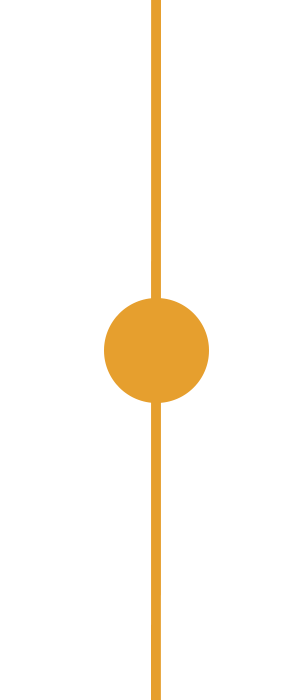

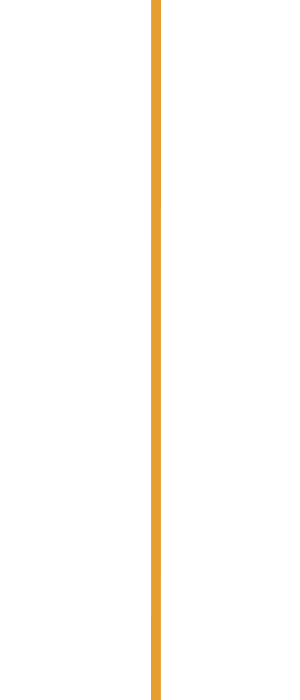








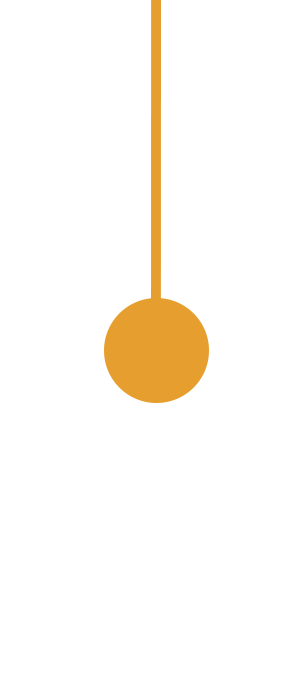
Jonathan Williams’ Birth
March 8, 1929
Jonathan Williams was born to Thomas Benjamin and Georgette Williams on March 8, 1929 in Asheville, North Carolina. Not long after, his family moved to Washington, D.C. where Williams was raised and lived until he began attending Princeton University as a young adult.
Visit with Henry Miller
June 1951
In June 1951, Jonathan Williams traveled to Big Sur, California where he visited writer Henry Miller. Miller, known for his novels Tropic of Cancer, Black Spring, Tropic of Capricorn, and the trilogy The Rosy Crucifixion, was a controversial and prolific author. Williams later cited this trip as a significant point of inspiration and influence.
The First Publication: Jargon 1
June 1951
The following day, after returning from Big Sur, Jonathan Williams joined artist David Ruff for lunch at a Chinese restaurant located in San Francisco, California. Over lunch, the two of them created a small, folded pamphlet that featured a Patchenesque poem by Williams and a Blakean etching by Ruff. They titled it Garbage Litters the Iron Face of the Sun’s Child, or Jargon 1. Thus the Jargon Society was born. Right from the start, Jargon was about collaboration and it remained its genius: the eye and the ear.
Jonathan Williams Arrives at BMC
Late Summer 1951
Later in the summer of 1951, Jonathan Williams arrived at Black Mountain College. Williams decided to attend the college to study photography after dropping out of Princeton following his third semester, and then studying at the Phillips Gallery in Washington, D.C. and the Chicago Institute of Design in Chicago, Illinois. Photographers Harry Callahan and Aaron Siskind were visiting faculty during the 1951 Summer Session.
Image: Jonathan Williams at Black Mountain College. Jonathan Williams Photographs. Yale Collection of American Literature, Beinecke Rare Book and Manuscript Library.
Jargon 2- The Dancer (Joel Oppenheimer and Robert Rauschenberg)
Late Summer 1951
Following his arrival at Black Mountain College, Jonathan Williams quickly began working on the Jargon Society’s second publication. Jargon 2 was titled The Dancer and featured a poem by Joel Oppenheimer and a drawing by Robert Rauschenberg, both students at the college. The Dancer was printed in the Black Mountain College print shop. Williams went on to produce other Jargon publications during his time at BMC, though he eventually enlisted the services of the Biltmore Press in Asheville, instead of using the on-campus print shop.
Left: Cover of Jargon 2, The Dancer.
Right: Jonathan Williams (text) and Paul Ellsworth (illustration), Red/Gray, 1952. Published by the Jargon Society as Jargon 3, edition of 100 in paper wrappers. Printed by the Sad Devil Press (Joel Oppenheimer). Collection of Black Mountain College Museum + Arts Center. Gift of Brian Butler.
Jonathan Williams in Stuttgart, Germany
1953
In 1953, Jonathan’s time at Black Mountain College was interrupted when he was drafted in the Korean War and stationed to do non-combatant work in Stuttgart, Germany. Williams was working as a neuro-psychiatric technician in a locked ward of the Fifth General Hospital in Stuttgart. As a conscientious objector, he was exempted from combat training and service.
Jargon 7- The Maximus Poems by Charles Olson
1953, 1956, 1960
Among the Jargon Society’s most notable publications were The Maximus Poems, written by Black Mountain College rector Charles Olson. The first edition of The Maximus Poems (The Maximus Poems / 1-10) was published by Jargon in 1953. While stationed in Germany, Williams got into contact with James Laughlin, a notable printer who had published editions for New Directions. Williams had some funding available for new Jargon projects, as a friend named Charles Neel had left him about $1,500 in his will, and this was more than enough seed money to publish a small edition in those days. The first collection of The Maximus Poems, which Olson had been working on since at least 1951, was published in Stuttgart, 1953, in an edition of 300 copies with an additional ‘donor’s edition’ of 50 copies, signed and boxed. A second volume, The Maximus Poems / 11-22, was published in 1956 as Jargon 9. (This was also published in Stuttgart, although Williams had returned to the U.S.) In 1960, the two volumes were published as a complete collection by Corinth Books, New York. This publication was numbered Jargon 24. The Maximus Poems were meant to be read as one long composition, from first to last, and followed the exploits of Olson’s alter-ego character named Maximus.
Image: Jonathan Williams, Charles Olson Writing The Maximus Poems, 1951. Gelatin silver print. Collection of Black Mountain College Museum + Arts Center. Gift of the Artist.
Jonathan Returns to the U.S.
1954
In early 1954, Williams returned to the United States after his time stationed in Germany and headed to San Francisco where he stayed with Robert Duncan for a few months. He spent his time with Duncan attempting to sell copies of the Jargon Society’s The Maximus Poems, as well as continuing to take many photographs during his travels. By 1955, Williams was back in North Carolina and continued to spend time at and photograph BMC off and on through 1956.
Canteen used by Jonathan Williams on the Appalachian Trail and possibly other hikes. Collection of Black Mountain College Museum + Arts Center. Gift of Roger Manley.
Jonathan’s World Travels
Mid 1950s-1960s
Jonathan continued selling Jargon publications and taking photographs for many years. In the mid 1950s, he began traveling across the country in his Volkswagen alongside his partner at the time, Ronald Johnson. Williams and Johnson travelled all over the globe exploring, promoting the Jargon Society, selling books, giving lectures, and seeking out new artists to feature. In addition to traveling to expand the outreach of the Jargon Society, the couple hiked across North America and Europe, some of their most notable hikes being in the German Black Forest, Swiss Alps, English Lake District, and the Appalachian Trail in 1961. Publishing activities continued; a total of 48 Jargon titles were published between 1955 and 1970.
Jonathan Settles Down: Corn Close and Scaly Mountain
1970s
Jonathan met his long-term partner, Thomas Meyer, in 1968 after accepting a manuscript of Meyer’s that would later be published as Jargon 69, The Bang Book. When the two met, Meyer was nearing the end of his time as a student at Bard College. In the early 1970s, they began living together at two locations: a cottage in Dentdale, England, and Jonathan’s family home in Scaly Mountain, North Carolina. The Jargon Society continued its prolific publishing activities: In total, there were 52 Jargon titles published between 1970 and 1998.
Thomas Meyer and Jonathan Williams wearing sweaters created by Astrid Furnival. Jonathan Williams Photographs. Yale Collection of American Literature, Beinecke Rare Book and Manuscript Library.
Jargon 101: White Trash Cooking by Ernest Matthew Mickler
Spring 1986
Left: Cover of Jargon 101, White Trash Cooking. Library Collection of Black Mountain College Museum + Arts Center. Right: Photographer Unknown, Portrait of Ernest Matthew Mickler, n.d. Type C print. Collection of Black Mountain College Museum + Arts Center. Gift of Thorns Craven.
Jargon at Forty
1991
Published to commemorate Jargon’s fortieth anniversary, Jargon at Forty is a written exhibition compiled by The Poetry/Rare Books Collection at The State University of New York at Buffalo. It contains a mix of Jonathan’s photography, artwork from Jargon publications, and a list of all the Jargon titles that had been published at the time of its compilation. Jargon at Forty became an important resource for collectors and Jargon enthusiasts. Building on the information compiled for the book, a complete bibliographic checklist (updated continuously by Black Mountain College Museum + Arts Center) is available in the Bibliographic Checklist section of this digital exhibition.
Cover of Jargon at Forty, 1951-1991: An Exhibition and Celebration. Library Collection of Black Mountain College Museum + Arts Center.
Jonathan Williams’ Death
March 16, 2008
Jonathan Williams died of pneumonia on March 16, 2008 in Highlands, North Carolina. He was survived by his partner, Thomas Meyer.
The Jargon Society Exhibition at BMCM+AC
September 16, 2020 – August 14, 2021
Curated by Alice Sebrell, Black Mountain College Museum + Arts Center held an exhibition about Jonathan Williams and the Jargon Society from September 16, 2020 – August 24, 2021. The exhibition featured Williams’ photography alongside Jargon publications, archival materials, and objects / ephemera associated with the press, such as the Jargon Society Sign and Poetry Crown (both held in the museum’s permanent collection).
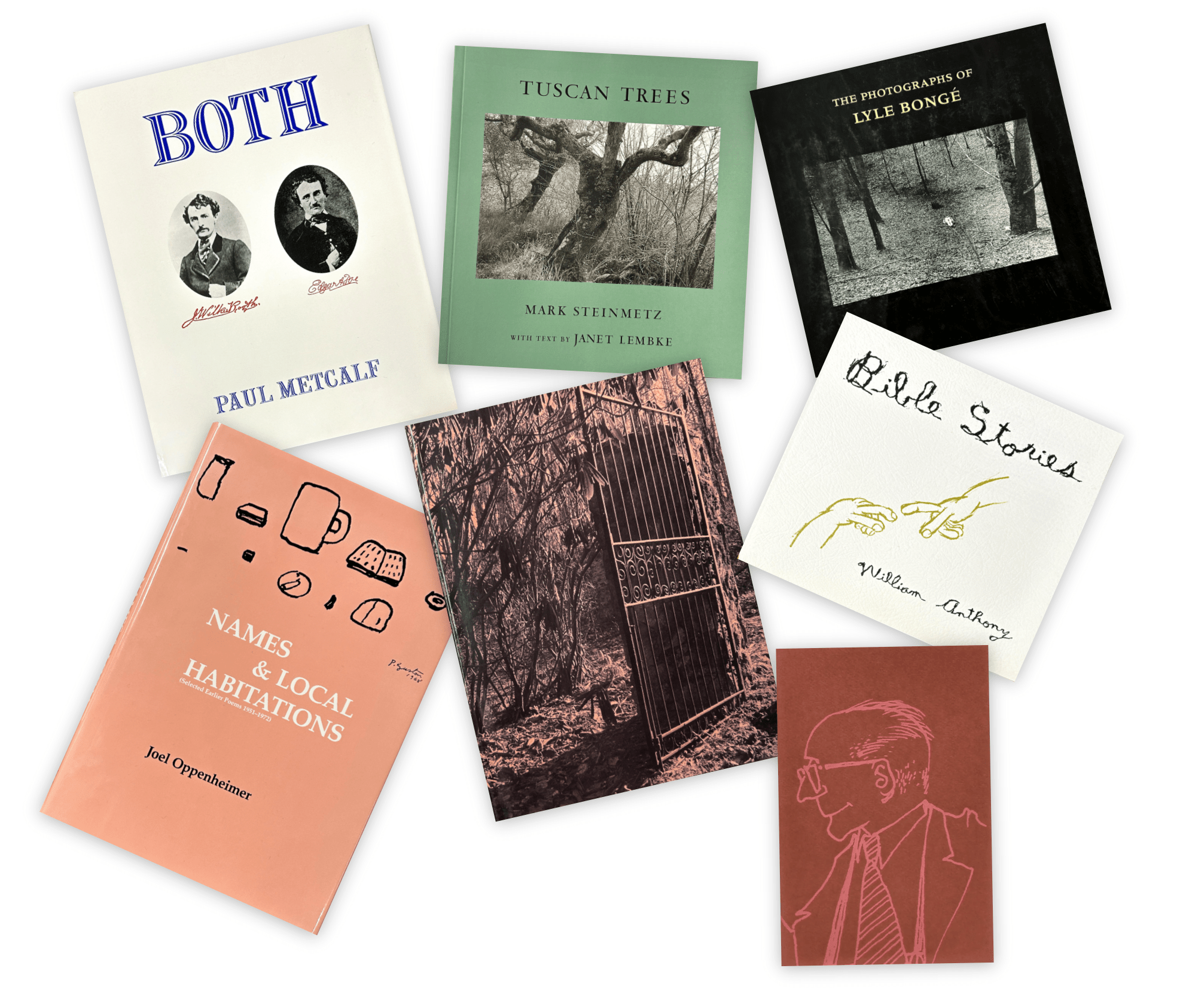
James Harold Jennings, Poetry Crown, circa 1986. Carved and painted wood. Collection of Black Mountain College Museum + Arts Center. Gift of the Estate of Jonathan Williams and Thomas Meyer.
After Williams’ death in 2008, Thomas Meyer became the steward of the Jargon Society Press. Meyer made the decision to transfer the Jargon Society catalog and publishing rights to Black Mountain College Museum + Arts Center. Meyer said: “The Jargon Society has always championed outsiders, mavericks and the neglected, itself no stranger to same. Yet with the death of its founder, it seemed to me the time had come for the foundation to make some changes. The BMCM+AC struck me as a perfect compass to provide new directions. Shared histories, shared aesthetics, and shared missions. In short, a perfect shelter, a perfect match.” In February 2025, BMCM+AC published The Anthology of Black Mountain Poetry, a collection of poetry that highlights the works of over fifty Black Mountain poets. Charles Olson, Robert Creeley, and M.C. Richards, among many others, are included in this publication. The anthology also highlights the work of artists of other mediums that were often overlooked as poets, including John Cage, Buckminster Fuller, and Josef Albers.
Jargon Society License Plate. Collection of Black Mountain College Museum + Arts Center.
Jargon Society Postcards
Many of the poets associated with BMC possessed a keen sense of visual design as well as a great command of language, none more so than Jonathan Williams. Throughout his life, Williams studied painting, engraving, photography, typography, and etching in various schools and with many influential teachers. Before his time at BMC, Williams spent a semester at the Bauhaus-influenced Institute of Design in Chicago where critic Tom Patterson says that Williams “produced his final statement as a painter” when he pitched a bucket of tar out of a high window onto a piece of white cardboard. Pictured below, that tar painting is now in the permanent collection at BMCM+AC. Also pictured below is a print from Williams’ collaborative edition, Six Rusticated, Wall-Eyed Poems, 1969, created with Dana W. Atchley. Entitled A Mnemonic Wallpaper Pattern for Southern Two-Seaters, this piece is an example of a mnemonic image, in which the visual design of the poem carries its meaning along with the words themselves.
Jonathan Williams (poem) and Dana W. Atchley (graphics), A Mnemonic Wallpaper Pattern for Southern Two-Seaters from the portfolio Six Rusticated, Wall-Eyed Poems, 1969. Silkscreen on paper. Collection of Black Mountain College Museum + Arts Center. Gift of Brian Butler.
Jonathan Williams, Untitled, 1951. Tar on cardboard. Collection of Black Mountain College Museum + Arts Center. Gift of the Estate of Jonathan Williams and Thomas Meyer.
Jonathan’s photography, an ongoing and serious pursuit, was frequently linked to the artists and writers he knew and appreciated – portraits of the living and tributes to the dead. Alongside helming the Jargon Society for most of his adult life, photography was his most prolific art form. Jonathan’s photography at Black Mountain College provides a glimpse into life on campus during the legendary college’s later years. His portraits of peers and professors at Lake Eden and beyond capture the sprawling constellation of personalities in the college’s orbit, figures which still loom large today.
The bibliographic checklist below, which is periodically updated by Black Mountain College Museum + Arts Center, was built from the following publications:
- J.M. Edelstein’s A Jargon Society Checklist (Books & Company 1979)
- Additions by Michael Basinski in Jargon at Forty: 1951-1991 (The Poetry/Rare Books Collection, SUNY at Buffalo 1991) (Also available in our library and for purchase in our bookstore)
- Additions by Richard Owens and Jeffery Beam in Jonathan Williams: The Lord of Orchards (Prospecta Press, 2017) (Also available in our library and for purchase via our online bookstore)
This list does not include Jargon Society postcards, broadsides, or billboards.
- Jonathan Williams. Garbage Litters the Iron Face of the Sun’s Child. Engraving by David Ruff. San Francisco, 1951. [150 copies.]
- Joel Oppenheimer. The Dancer. Drawing by Robert Rauschenberg. Black Mountain, 1951. [150 copies.]
- Jonathan Williams. Red / Gray. Drawings by Paul Ellsworth. Black Mountain, 1952. [100 copies in paper wrappers; 50 signed copies in boards with a photograph by Jonathan Williams.] Available by request in our library.
- Victor Kalos. The Double-Backed Beast. Drawings by Dan Rice. Black Mountain, 1952. [25 copies.] Available by request in our library.
- Jonathan Williams. Four Stoppages / A Configuration. Drawings by Charles Oscar. Stuttgart, 1953. [200 copies.]
- Kenneth Patchen. Fables & Other Little Tales. Karlsruhe, 1953. [450 copies in wrappers and an author’s edition of 50 copies decorated and painted by Kenneth Patchen.]
- Charles Olson. The Maximus Poems / 1-10. Calligraphy by Jonathan Williams. Stuttgart, 1953. [300 copies and a donor’s edition of 50 copies, signed and boxed.] Available by request in our library.
- Robert Creeley. The Immoral Proposition. Drawings by René Laubiès. Karlsruhe, 1953. [200 copies.]
- Charles Olson. The Maximus Poems / 11-22. Calligraphy by Jonathan Williams. Stuttgart, 1956. [350 copies and a patron’s edition of 25 copies, signed and boxed.] Available by request in our library.
- Robert Creeley. All That Is Lovely In Men. Drawings by Dan Rice. Photograph by Jonathan Williams. Asheville, 1953. [200 copies.]
- Kenneth Patchen. Poemscapes. Highlands, 1958. [1500 copies in wrappers; 42 copies of a gold and gray edition, with an original holograph; and 75 copies prepared and painted by Kenneth Patchen.] Available by request in our library.
- Louis Zukofsky. A Test of Poetry. New York, 1964. Published in association with Corinth Books. Available by request in our library.
- Jonathan Williams. Poems, 1953-1955. In three volumes:
- 13a. Amen / Huzza / Selah. “A Preface?” by Louis Zukofsky. Photographs by Jonathan Williams. Black Mountain, 1960. [700 copies and 50 signed, special copies.] Available by request in our library.
- 13b. Elegies and Celebrations. Preface by Robert Duncan. Photographs by Aaron Siskind and Jonathan Williams. Highlands, 1962. [700 copies and 50 signed, special copies.] Available by request in our library.
- 13c. Jammin’ the Greek Scene. Note by Charles Olson. Drawings by Fielding Dawson. Karlsruhe, 1959. [James Jaffe notes, “Approximately 4 proof copies were produced for a projected edition of 300 copies, but the book, with a cover designed by Fielding Dawson, was never published.”]
- Robert Duncan. Letters: Poems 1953-1956. Drawings by Robert Duncan. Highlands, 1958. [450 copies printed on Arches paper in wrappers and 60 copies printed on Shogun paper and bound in marbled paper over boards. These 60 copies contain drawings by the author on the endpapers; 15 of the 60 copies have colored drawings by the author pasted in.]
- Louis Zukofsky. Some Time. A song setting on the cover by Celia Zukofsky. Stutttgart, 1956. [300 copies and 50 copies of a signed author’s edition.]
- Joel Oppenheimer. The Dutiful Son. Frontispiece by Joseph Fiore. Highlands, 1957. [200 copies and an author’s edition of 30 copies with a lithographed cover by Fiore. Two variants of the regular issues: one in tan wrappers, the other in blue wrappers with a white label.]
- Stuart Z. Perkoff. The Suicide Room. Drawing by Fielding Dawson. Photograph by Charles Kessler. Karlsruhe, 1956. [200 copies in wrappers and 25 hardcover copies, numbered and signed.]
- Irving Layton. The Improved Binoculars. Introduction by William Carlos Williams. Highlands, 1956. [500 copies.] Second edition, with thirty additional poems. [1000 copies.]
- Denise Levertov. Overland to the Islands. Drawings by Al Kresch. Calligraphy by Jonathan Williams. Highlands, 1958. [450 copies and an author’s edition of 50 signed copies.] Available by request in our library.
- Michael McClure. Passage. Calligraphy by Jonathan Williams. Big Sur, 1956. [200 copies.]
- Kenneth Patchen. Hurrah for Anything. Drawings by Kenneth Patchen. Highlands, 1957. [2500 copies and 100 copies prepared and painted by Kenneth Patchen.] Available by request in our library.
- Henry Miller. The Red Notebook. Drawings by Henry Miller. Photograph by Wynn Bullock. Highlands, 1958. [2000 copies.] Available by request in our library.
- Mina Loy. Lunar Baedeker and Time-Tables. Introductions by William Carlos Williams, Kenneth Rexroth and Denise Levertov. Drawings by Emerson Woelffer. Highlands, 1958. [450 copies and an author’s edition of 50 signed copies.] Available by request in our library.
- Charles Olson. The Maximus Poems. Photograph by Frederick Sommer. Published in association with Corinth Books. New York, 1960. [2000 copies in wrappers and 101 bound copies, of which 75 copies are numbered, and 26 copies are lettered and signed.] Available by request in our library.
- Paul C. Metcalf. Will West. Asheville, 1956. [500 copies.]
- Robert Creeley. The Whip. Cover design by René Laubiès. Drawings by Kirsten Hoeck. Highlands, 1957. [500 copies in wrappers and 100 hardbound copies.]
- Peyton Houston. Sonnet Variations. Photograph by Henry Holmes Smith. Highlands, 1962. [1000 copies.] Available by request in our library.
- Irving Layton. A Laughter in the Mind. Photograph by Frederick Sommer. Highlands, 1958. [2000 copies.] Available by request in our library.
- Bob Brown. 1450-1950. Photograph by Jonathan Williams. Published in association with Corinth Books. New York, 1959. [2000 copies.] A facsimile reproduction of the book which was first published by The Black Sun Press of Harry and Caresse Crosby in Paris, 1929. Available by request in our library.
- Jonathan Williams. The Empire Finals at Verona. Drawings and collage by Fielding Dawson. Highlands, 1959. [1000 copies.] Available by request in our library.
- 14 Poets, 1 Artist. Poems by Paul Blackburn, Bob Brown, Edward Dahlberg, Max Finstein, Allen Ginsberg, Paul Goodman, Denise Levertov, Walter Lowenfels, Edward Marshall, E.A. Navaretta, Joel Oppenheimer, Gilbert Sorrentino, Jonathan Williams and Louis Zukofsky. Drawings by Fielding Dawson. New York, 1958. [1000 copies.] Available by request in our library.
- Walter Lowenfels. Some Deaths. Introduction by Jonathan Williams. Photographs by Robert Schiller. Highlands, 1964. [1500 copies.] Available by request in our library.
- Robert Creeley. A Form of Women. Photograph by Robert Schiller. Published in association with Corinth Books. New York, 1959. [2000 copies.]
- Bob Brown. The Selected Poems. Introduction by Kay Boyle. Drawing by Reuben Nakian. Jargon 34 was projected but never published.
- Irving Layton. A Red Carpet for the Sun. Photograph by Harry Callahan. Highlands, 1959. [1000 copies.]
- Larry Eigner. On My Eyes. Introduction by Denise Levertov. Photographs by Harry Callahan. Highlands, 1960. [500 copies.] Available by request in our library.
- Russell Edson. What a Man Can See. Drawings by Ray Johnson. Highlands, 1969. [1000 copies.] Available by request in our library.
- Giuseppe Gioachino Belli. The Roman Sonnets. Translated by Harold Norse. Preface by William Carlos Williams. Introduction by Alberto Moravia. Cover by Ray Johnson. Collage by Jean-Jacques Lebel. Highlands, 1960. [2000 copies and 100 copies of the Roma edition in cloth, boxed, and signed by the translator and writers of the preface and introduction.] Available by request in our library.
- Jonathan Williams. Lord! Lord! Lord!: Traditional Funeral Music. Hors de commerce, handset and printed “for the friends of the Jargon Press” by Igal Roodenko. Highlands, 1959.
- Gilbert Sorrentino. The Darkness Surrounds Us. Introduction by Joel Oppenheimer. Collage and drawings by Fielding Dawson. Highlands, 1960. [1000 copies.]
- Lou Harrison. Three Choruses from Opera Libretti: Jargon’s Christmas in 1960. Highlands, 1960. Hors de commerce and dedicated to Robert Duncan. [200 copies.]
- Ronald Johnson. A Line of Poetry, A Row of Trees. Drawings by Thomas George. Printed by the Auerhahn Press, San Francisco. Errata sheet laid in. Highlands, 1964. [500 copies and 50 copies of an author’s edition, handbound and signed by poet and artist.]
- Paul C. Metcalf. Genoa: A Telling of Wonders. Iconography by Jonathan Williams. Highlands, 1965. Available by request in our library.
- Buckminster Fuller. Untitled Epic Poem on the History of Industrialization. Introduction by Russell Davenport. Highlands, 1962. Available by request in our library.
- Sherwood Anderson. Six Mid-American Chants. Photographs by Art Sinsabaugh. Preface by Edward Dahlberg. Postface by Frederick Eckman. Highlands, 1964. [1550 copies.]
- Guy Davenport. Flowers and Leaves. Photograph by Ralph Eugene Meatyard. Highlands, 1966.
- Merle Hoyleman. Letters to Christopher. Introduction by George Marion O’Donnell. Jargon 47 was projected but never published.
- Lorine Niedecker. Tenderness & Gristle: The Collected Poems (1936-1966). Plant prints by A. Doyle Moore. Penland, 1968. [2000 copies.]
- Alfred Starr Hamilton. Poems. Introduction by Geof Hewitt. Drawings by Philip Van Aver. Photograph by Simpson Kalisher. Penland, 1970. Available by request in our library.
- Doris Ulmann. The Appalachian Photographs of Doris Ulmann. Introduction by John Jacob Nies. Preface by Jonathan Williams. Penland, 1971. Available by request in our library.
- Thomas Meyer. A Valentine for L.Z. Highlands, 1979. [300 copies.]
- Peyton Houston. Occasions in a World. Drawings by Bob Nash. Penland, 1969.
- Mina Loy. The Last Lunar Baedeker. Edited and introduced by Roger Conover. Designed by Herbert Bayer. Highlands, 1982. Available by request in our library.
- Mason Jordan Mason. The Selected Poems. Introduction by Judson Crews. Photographs by Ron Nameth. Jargon 54 was projected but never published.
- James Broughton. A Long Undressing: Collected Poems, 1949-1969. Photograph by Imogen Cunningham. New York, 1971. [In addition to the trade issue, there were 100 copies specially bound and signed by the author.] Purchase at BMC Books. Available by request in our library.
- James Broughton. High Kukus. Preface by Alan Watts. Drawings by Hak Vogrin. New York, 1968. “Rainbow Edition” printed on multicolored, accordion-folded pages. Available by request in our library.
- Joel Oppenheimer. Just Friends / Friends and Lovers (Poems 1959-1962). Photograph by Bob Adelman. Highlands, 1980. Purchase at BMC Books. Available by request in our library.
- Paul C. Metcalf. Patagoni. Iconography by Jonathan Williams. Penland, 1971. Available by request in our library.
- Joel Oppenheimer. Names & Local Habitations (Selected Earlier Poems, 1951-1972). Accolade by Hayden Carruth. Introduction by William Corbett. Illustrated by Philip Guston. Winston-Salem, 1988. Purchase at BMC Books. A regular copy and a proof copy are available by request in our library.
- James Broughton. 75 Life Lines. Designed and produced at the Arion Press, San Francisco. Winston-Salem, 1988. [1500 copies in wrappers and 75 in boards.] Purchase at BMC Books. Available by request in our library.
- Jonathan Williams. Lullabies Twisters Gibbers Drags. Cover by R.B. Kitaj. Highlands, 1963. Available by request in our library.
- Jonathan Williams. Emblems for the Little Dells, and Nooks and Corners of Paradise. Highlands, 1962. [300 signed and numbered copies.]
- Simon Cutts. Seepages (Poems 1981-1987). Winston-Salem, 1988. Purchase at BMC Books. Available by request in our library.
- Tom Patterson. St. EOM in the Land of Pasaquan (The Life and Times of Eddie Owens Martin). Photography by Jonathan Williams, Roger Manley and Guy Mendes. Foreword by John Russell. Highlands, 1987. [4000 copies, plus 100 numbered copies of a Patrons’ Edition, signed by Tom Patterson, Jonathan Williams, Roger Manley, and Guy Mendes, issued in four-flap portfolio case. While the colophon states that the Patrons’ Edition was bound in full leather, it was not.] Purchase at BMC Books. Available by request in our library.
- Edwin Morgan. The Siesta of the Hungarian Snake. Several mockup formats were designed and printed by students of A. Doyle Moore at his Finial Press in 1971 but never officially published. One version is available by request in our library.
- Jonathan Williams, editor. Madeira & Toasts for Basil Bunting’s 75th Birthday. Designed by A. Doyle Moore. Cover portrait by R.B. Kitaj. Highlands, 1977. [1250 copies.] Purchase at BMC Books. Available by request in our library.
- Guy Davenport. Do You Have a Poem Book on E.E. Cummings? Drawings by Guy Davenport. Penland, 1969. [1000 copies.] Purchase at BMC Books. Available by request in our library.
- Ian Hamilton Finlay. The Blue and the Brown Poems. Prefaces by Michael Weaver and Jonathan Williams. Notes by Stephen Bann. Calendar design by Herbert M. Rosenthal. Published in association with the Atlantic Richfield Company and Graphic Arts Typographers, Inc. Aspen, 1968. Large format 1968-69 calendar of twelve concrete poems. [5000 copies.] Available by request in our library.
- Thomas Meyer. The Bang Book. Drawings by John Furnival. Highlands, 1971. Available by request in our library.
- Richard Emil Braun. Bad Land. Photograph by Fredrick Sommer. Penland, 1971. [Published in wrappers and in cloth.] Available by request in our library.
- Ross Field. Plum Poems. Drawings by Dan Rice. Accolade by Gilbert Sorrentino. New York, 1972. [Published in wrappers and in cloth.] Available by request in our library.
- Ronald Johnson. The Spirit Walks, The Rocks Will Talk. Drawings by Guy Davenport. Penland, 1969. [500 copies, signed by the poet and the artist.] Available by request in our library.
- Douglas Woolf. Spring of the Lamb. “Broken Field Runner: A Douglas Woolf Notebook” by Paul Metcalf appended at back. Photographs by Ralph Eugene Meatyard. Highlands, 1972. Available by request in our library.
- Jonathan Williams, editor. Epitaphs for Lorine. Frontispiece by A. Doyle Moore. Back cover by Ian Hamilton Finlay. Photograph by Diane Tammes. Penland, 1973. [1000 copies.]
- Thomas A. Clark. Some Particulars. Photograph by Bart Parker. Highlands, 1971. Available by request in our library.
- Ralph Eugene Meatyard. The Family Album of Lucybelle Carter. Texts by Jonathan Greene, Ronald Johnson, Ralph Eugene Meatyard, Guy Mendes, Thomas Meyer and Jonathan Williams. Highlands, 1974. Available by request in our library.
- Lyle Bongé. The Sleep of Reason: Lyle Bongé’s Ultimate Ash-Hauling Mardi Gras Photographs. Texts by James Leo Herlihy and Jonathan Williams. Highlands, 1974. Purchase at BMC Books. Available by request in our library.
- Paul C. Metcalf. The Middle Passage (A Triptych of Commodities). Highlands, 1976. Available by request in our library.
- Jonathan Williams and Thomas Meyer. EPitaph. Corn Close, 1972. Available by request in our library.
- Jonathan Williams. Pairidaeza. Lithographs by Ian Gardner. Dentdale, 1975. [75 copies signed by poet and artist and 10 author’s copies.] Xerox of typed working copy available by request in our library.
- Simon Cutts. Quelques Pianos. Accolade by Ian Gardner. Highlands, 1976. Available by request in our library.
- Jonathan Williams. Who Is Little Enis? Photograph by Guy Mendes. Corn Close, 1974. [500 signed copies.]
- Thomas Meyer. The Umbrella of Aesculapius. Introduction by Robert Kelly. Drawings by Paul Sinodhinos. Highlands, 1975. [900 copies in paper, 50 paper over boards, 50 bound in linen.] Available by request in our library.
- Ronald Johnson. Eyes & Objects (Catalogue for an Exhibition: 1970-1972. Foreword by John Russell. Highlands, 1976. [1000 copies.]
- William Anthony. Bible Stories. Drawings and texts by William Anthony. Introduction by Gilbert Sorrentino. Highlands, 1978. Available by request in our library.
- Thomas A. Clark. A Still Life. With Six Variations on a Chrysanthemum of William Morris by Ian Gardner. Dentdale, 1977. [950 copies in wrappers and 50 signed and numbered copies in boards.] Available by request in our library.
- Peter Yates. The Garden Prospect: Selected Poems. Introduction by Peyton Houston. Silverpoint illustrations by Susan Moore. Highlands, 1980. Available by request in our library.
- Thomas Meyer. Staves Calends Legends. Emblem by John Furnival. Highlands, 1979. Available by request in our library.
- Lyle Bongé. The Photographs of Lyle Bongé. Introduction by A.D. Coleman. Afterword by Jonathan Williams. Text by Lyle Bongé. Highlands, 1982. Purchase at BMC Books. Available by request in our library.
- William Anthony. Bill Anthony’s Greatest Hits. Foreword by Robert Rosenblum. “Flapdoodle” text by Jonathan Williams. Highlands, 1988. [2000 copies in cloth, with a Patrons’ Edition of 100 copies with an original drawing included.] [James Jaffe notes that Jargon 90 was originally (in the 1970s) planned to be Eyes in Leaves: A Tribute to Guy Davenport, but this was never published.] Purchase at BMC Books. Available by request in our library.
- Jonathan Williams. Elite / Elate Poems (1971-1975). Photographs by Guy Mendes. Highlands, 1979. Available by request in our library.
- Paul C. Metcalf. BOTH. Highlands, 1982. Available by request in our library.
- Thomas A. Clark. Ways Through Bracken. Kendal, Cumbria, England, 1980. Available by request in our library.
- Simon Cutts. Pianostool Footnotes. Kendal, Cumbria, England, 1982. [Edition of 1000 copies with 950 bound in paper wrappers, and the remaining 50 hardbound in paper over boards, signed by the author, and numbered 1-50.] Available by request in our library.
- William Innes Homer, editor. Heart’s Gate (Letters Between Marsden Hartley and Horace Traubel 1906-1915). Edited and introduced by William Innes Homer. Highlands, 1982. Purchase at BMC Books. Available by request in our library.
- Peyton Houston. Arguments of Idea. Highlands, 1980. Available by request in our library.
- John Menapace. Letter in a Klein Bottle: Photographs by John Menapace. Introduction by Donald B. Kuspit. Afterword by Jonathan Williams. Highlands, 1984. Purchase at BMC Books. Available by request in our library.
- Richard C. (a.k.a. Richard Craven or Richard Canard). Notches Along the Bible Belt. Jargon 98 was projected but never published. It was intended to be “a collage of found material, mostly from Baptist bookstores down South.” -Jonathan Williams, interviewed by Robert Dana in Against the Grain: Interviews with Maverick American Publishers (University of Iowa Press, 2009)
- Thomas Meyer. Sappho’s Raft. Frontispiece drawing by David Hockney. Designed by Ken Carls. Highlands, 1982. [Edition of 1500 copies, of which 1000 copies are bound in paper; 450 in cloth over boards; and 50 hand bound, signed by the author, and numbered 1-50.] Purchase at BMC Books. Available by request in our library.
- Lorine Niedecker. From This Condensery: The Complete Writings of Lorine Niedecker. Edited by Robert J. Bertholf. Highlands, 1985. [2500 copies in cloth, plus 100 copies of a Patrons’ Edition, bound in full leather, signed by the editor and publisher.] Available by request in our library.
- Ernest Matthew Mickler. White Trash Cooking. Photographs by Ernest Matthew Mickler. Highlands, 1986. Purchase at BMC Books (Ten Speed Press 25th anniversary edition). Available by request in our library.
- Thomas Meyer. At Dusk Iridescent: A Gathering of Poems, 1972-1997. Photograph by Reuben Cox. Winston-Salem, 1999. [900 copies in paper wrappers, plus 100 in paper over boards, signed and numbered.] Purchase at BMC Books. Available by request in our library.
- Jonathan Williams, editor. DBA at 70. Photographs by Jonathan Williams. Design by Jonathan Greene. Winston-Salem, 1989. [700 copies.] Purchase at BMC Books. Available by request in our library.
- Mark Steinmetz. Tuscan Trees: Photographs. Text by Janet Lembke. Winston-Salem, 2001. [Issued in paperback, plus 50 numbered and signed limited copies bound in cloth with original signed print laid in.] Purchase at BMC Books. Available by request in our library.
- Reuben Cox. The Work of Joe Webb: Appalachian Master of Rustic Architecture. Text by Reuben Cox. In association with the University of Georgia Press. Highlands and Athens, 2009. Purchase at Biblio. Available by request in our library.
- Peyton Houston. The Changes Orders Becomings. Drawings by James McGarrell. Highlands, 1990. [1000 copies in cloth.] Purchase at BMC Books. Available by request in our library.
- Richard Emil Braun. Last Man In. Photograph by Ron Nameth. Highlands, 1990. Purchase at BMC Books. Available by request in our library.
- Williams, Jonathan. A Hornet’s Nest. Quotes compiled by Jeffery Beam. Drawing by James McGarrell. Frontispiece by Sandra Reese. Photograph by Dobree Adams. Published in association with Green Finch Press (Green Finch Keening 71). Highlands and Chapel Hill, 2008. [300 copies.] Available by request in our library.
- Paul C. Metcalf. Araminta and the Coyotes. Highlands, 1991. Purchase at BMC Books. Available by request in our library.
- Lou Harrison. Joys & Perplexities: Selected Poems of Lou Harrison. Accolade by Ned Rorem. Winston-Salem, 1992. Purchase at BMC Books. Available by request in our library.
- David M. Spear. The Neugents: “Close to Home.” Afterword by Jonathan Williams. Highlands, 1993. Purchase at BMC Books. Available by request in our library.
- Elizabeth Matheson. Blithe Air: Photographs from England, Wales and Ireland. Illuminations and pyrotechnic display by Jonathan Williams. Accolade by Thomas Meyer. Winston-Salem, 1995. [1500 copies printed and bound by The Stinehour Press, of which 50 are a deluxe edition issued in slipcase, signed by the photographer, and accompanied by an original silver print.] Purchase at BMC Books. Available by request in our library.
- Jeffery Beam. Visions of Dame Kind. Accolade by Thomas Meyer. Designed by Jonathan Greene. Winston-Salem, 1995. [800 copies in paper, 200 in cloth, and a special handbound edition lettered A-Z, signed by Beam.] Purchase at BMC Books. Available by request in our library.
- Phillip March Jones. Points of Departure: Roadside Memorial Polaroids. Foreword by Thomas Meyer. Winston-Salem, 2011. Available by request in our library.
- Blake G. Hobby, Joseph Bathanti, and Alessandra Porco, editors. The Anthology of Black Mountain College Poetry. The University of North Carolina Press, February 2025. Published in association with Black Mountain College Museum + Arts Center. Purchase at BMC Books.
- Thomas Meyer. Corn Close: A Cottage In Dentdale. Photographs by Rueben Cox. Accompanying essays by Thomas Meyer and Anne Midgette. Asheville, 2015.
- Tom Patterson. The Tom Patterson Years: Cultural Adventures of a Fledgling Scribe. Designed by Jonathan Greene. Co-published with Hiding Press, Philadelphia, PA, 2021.

